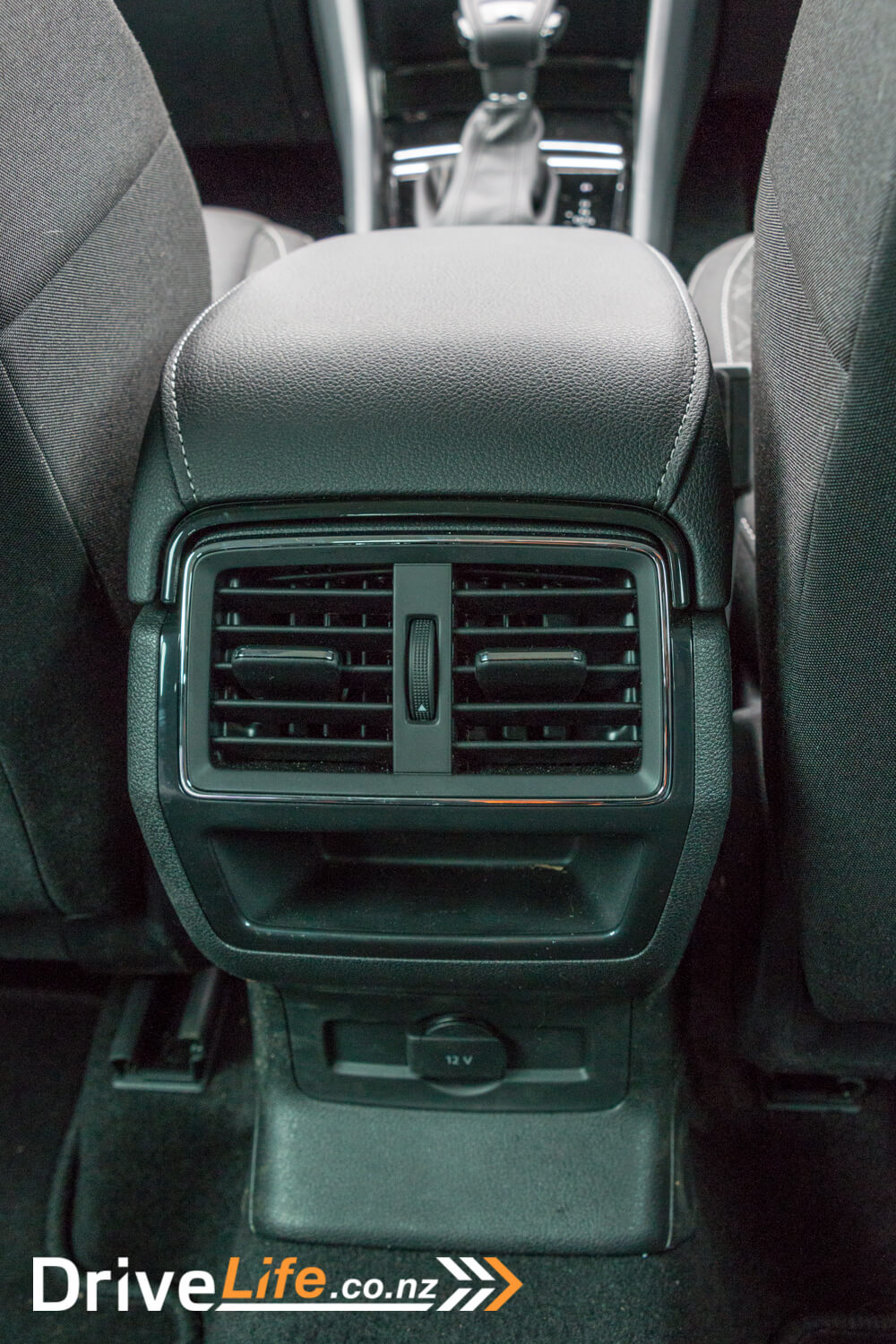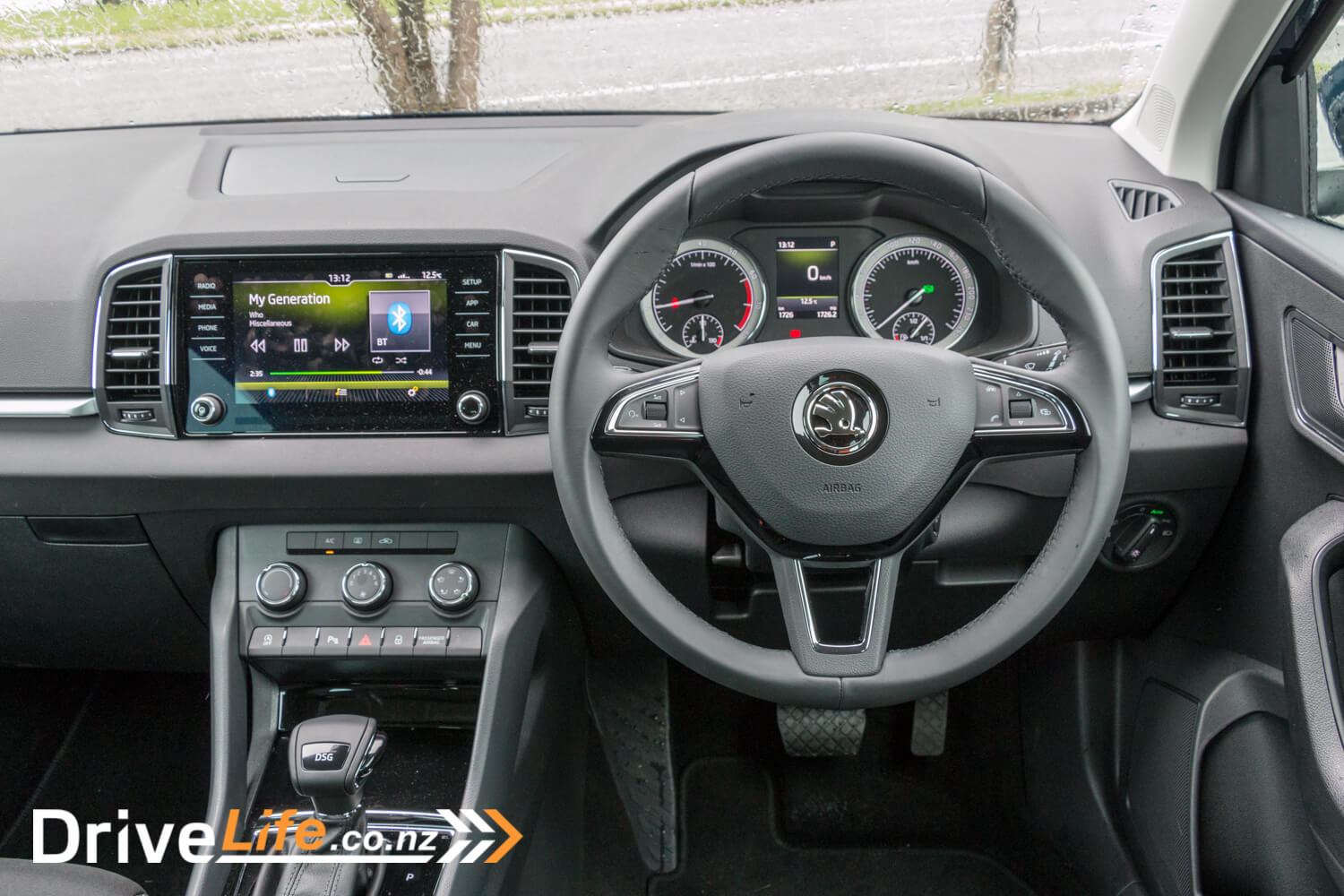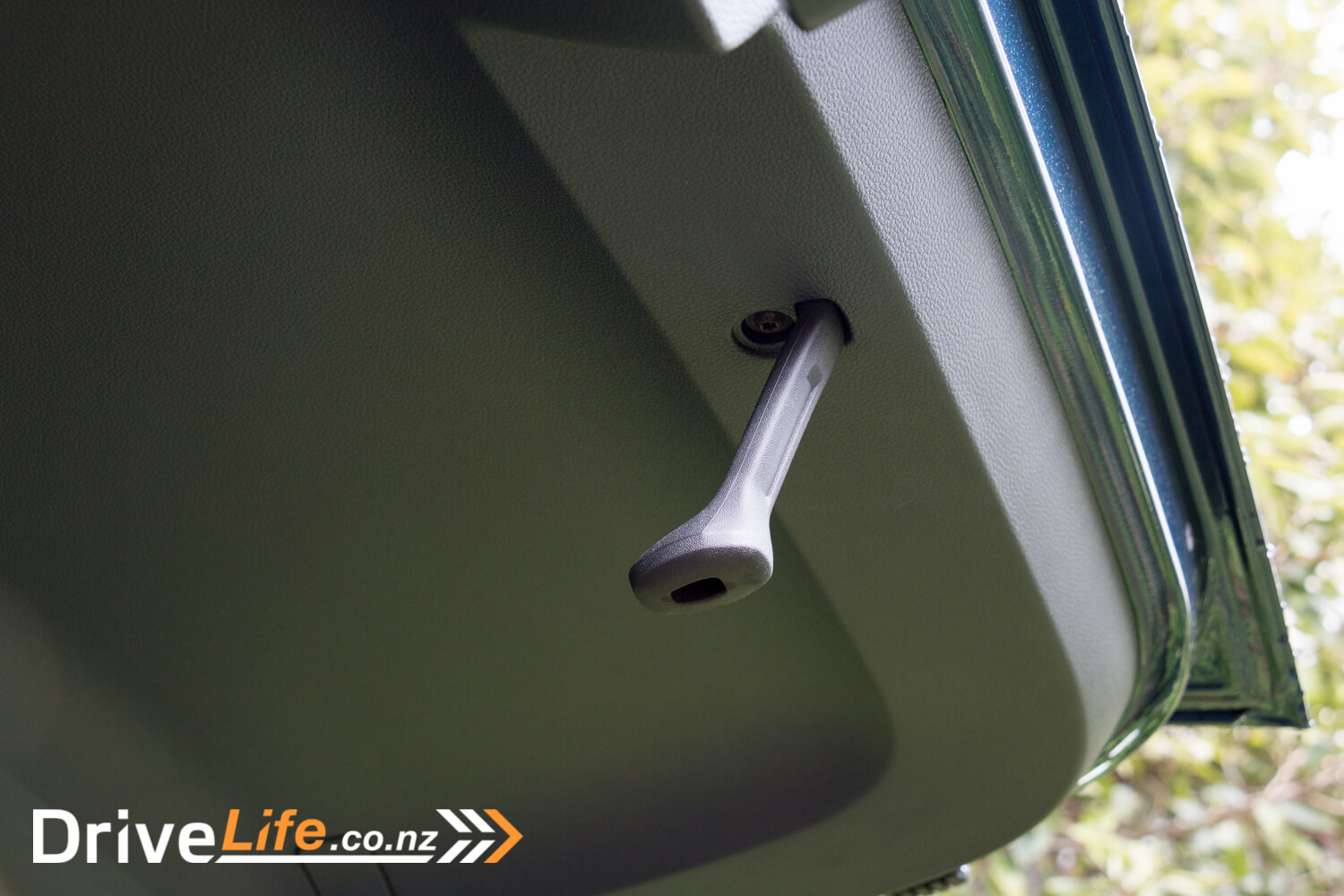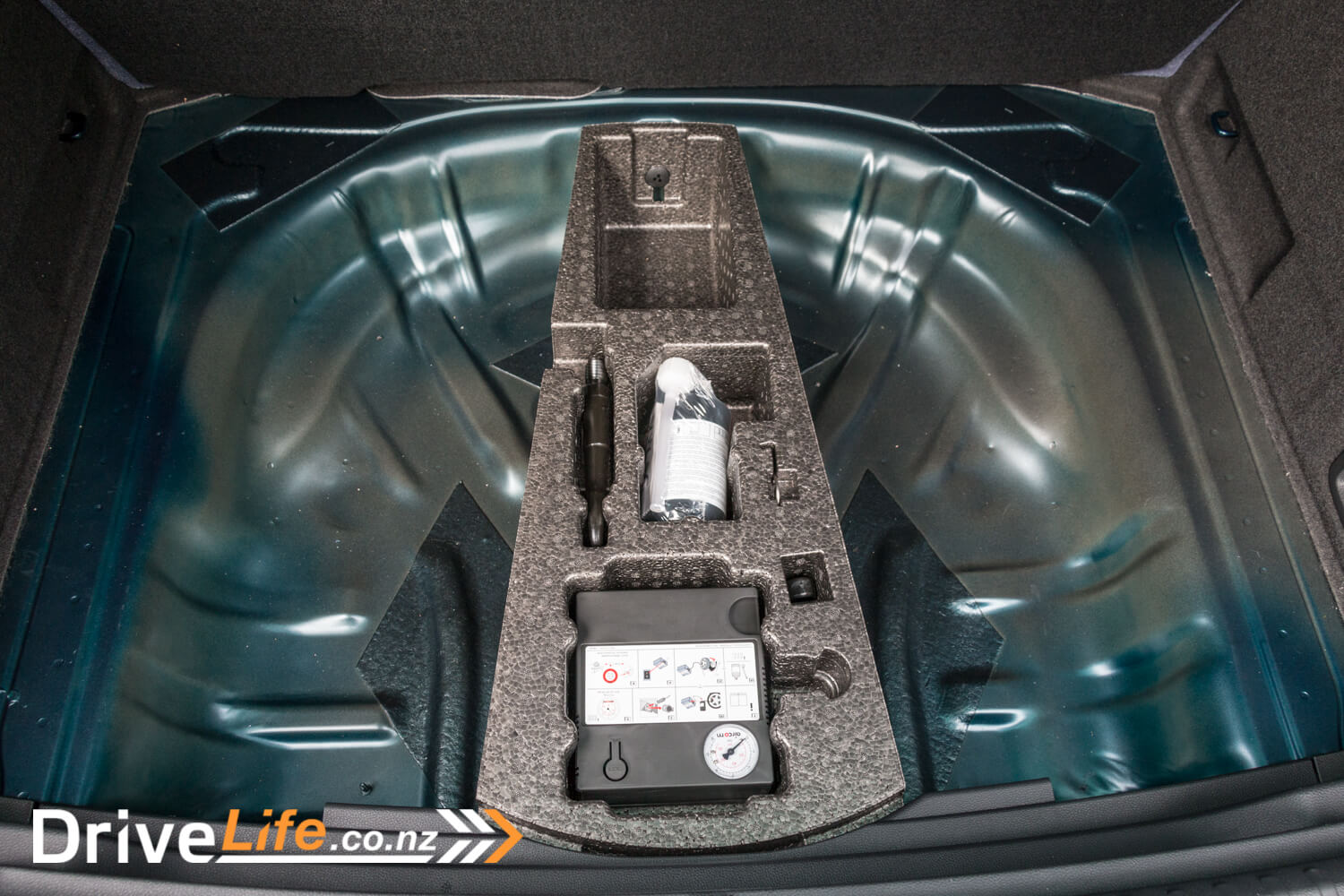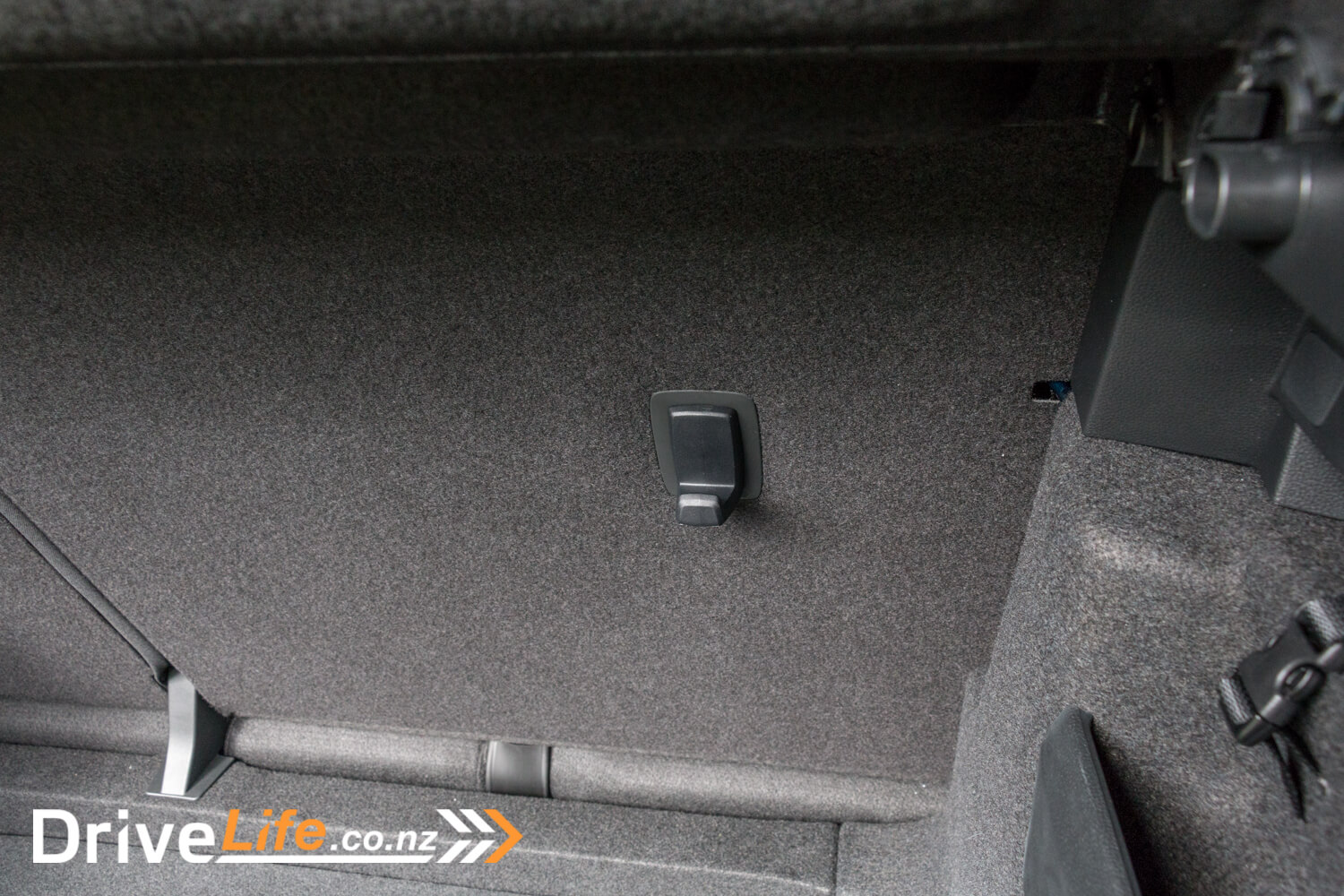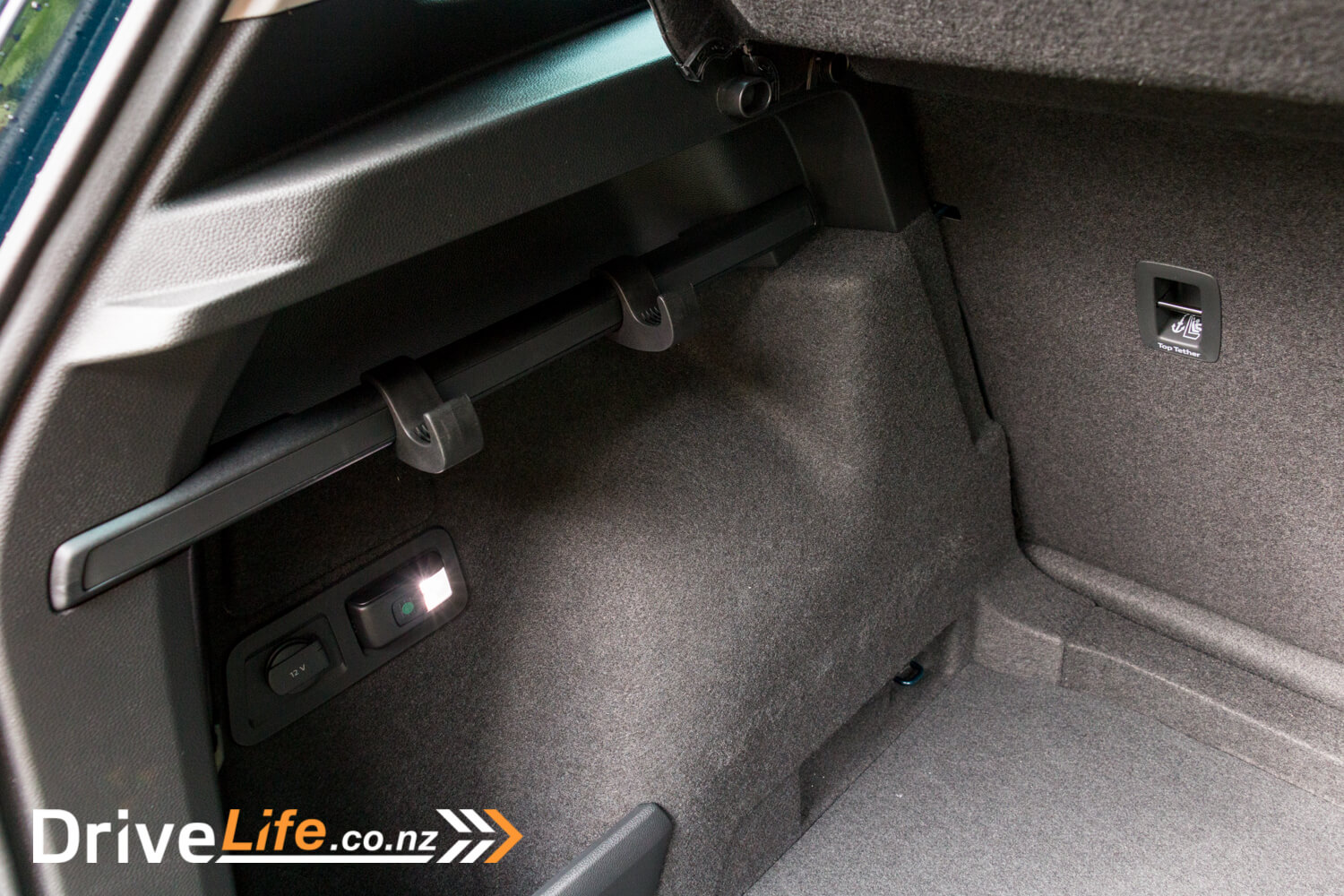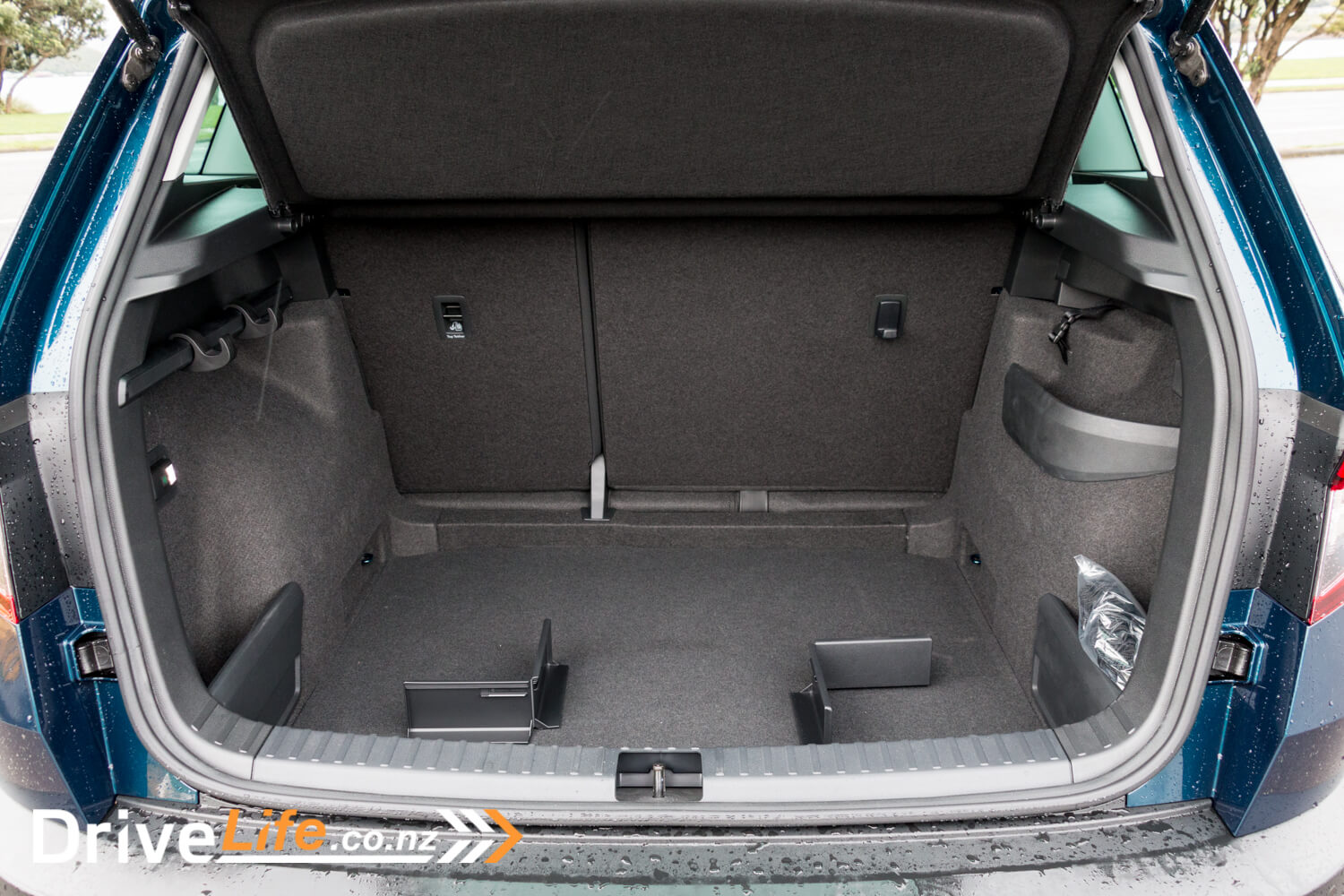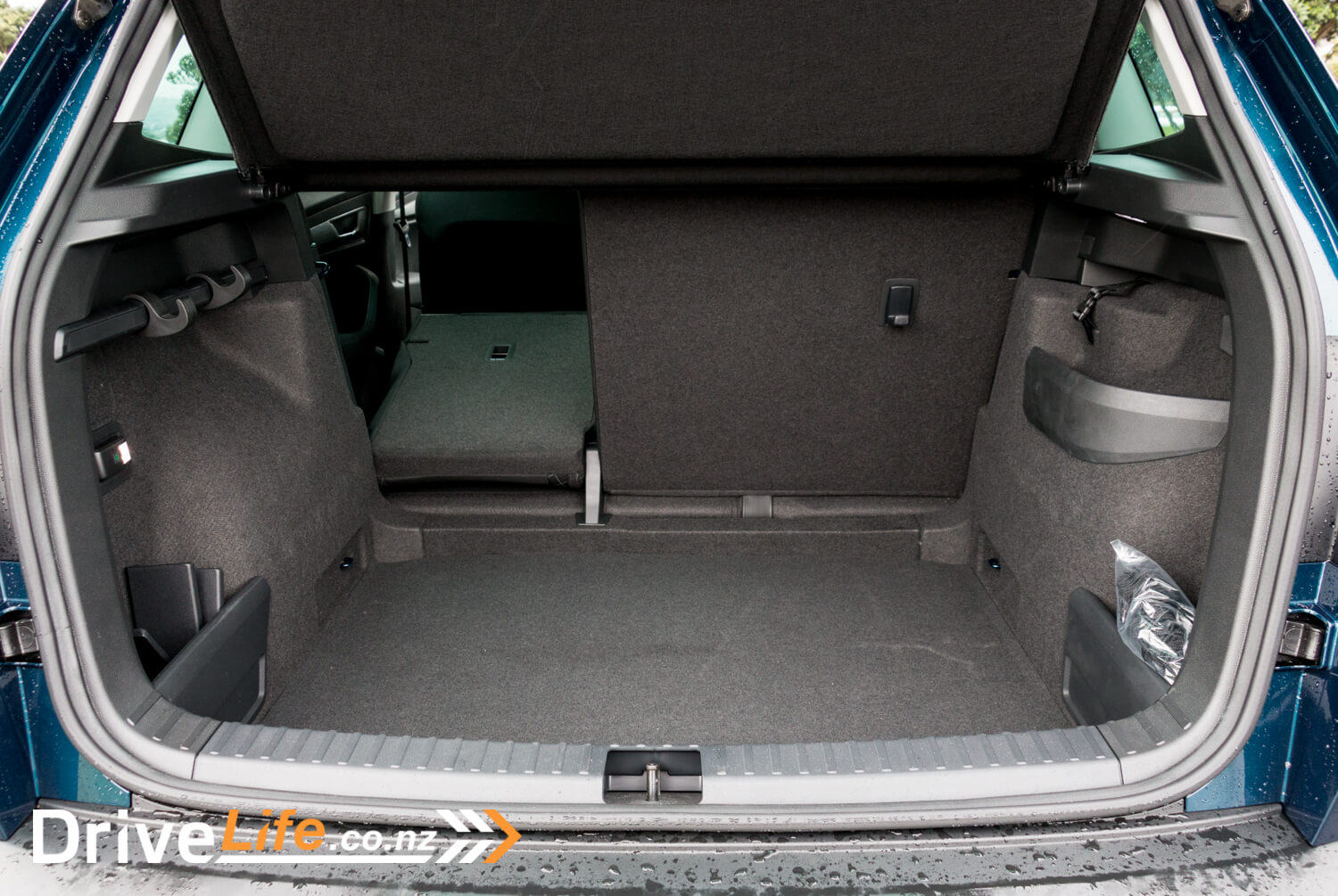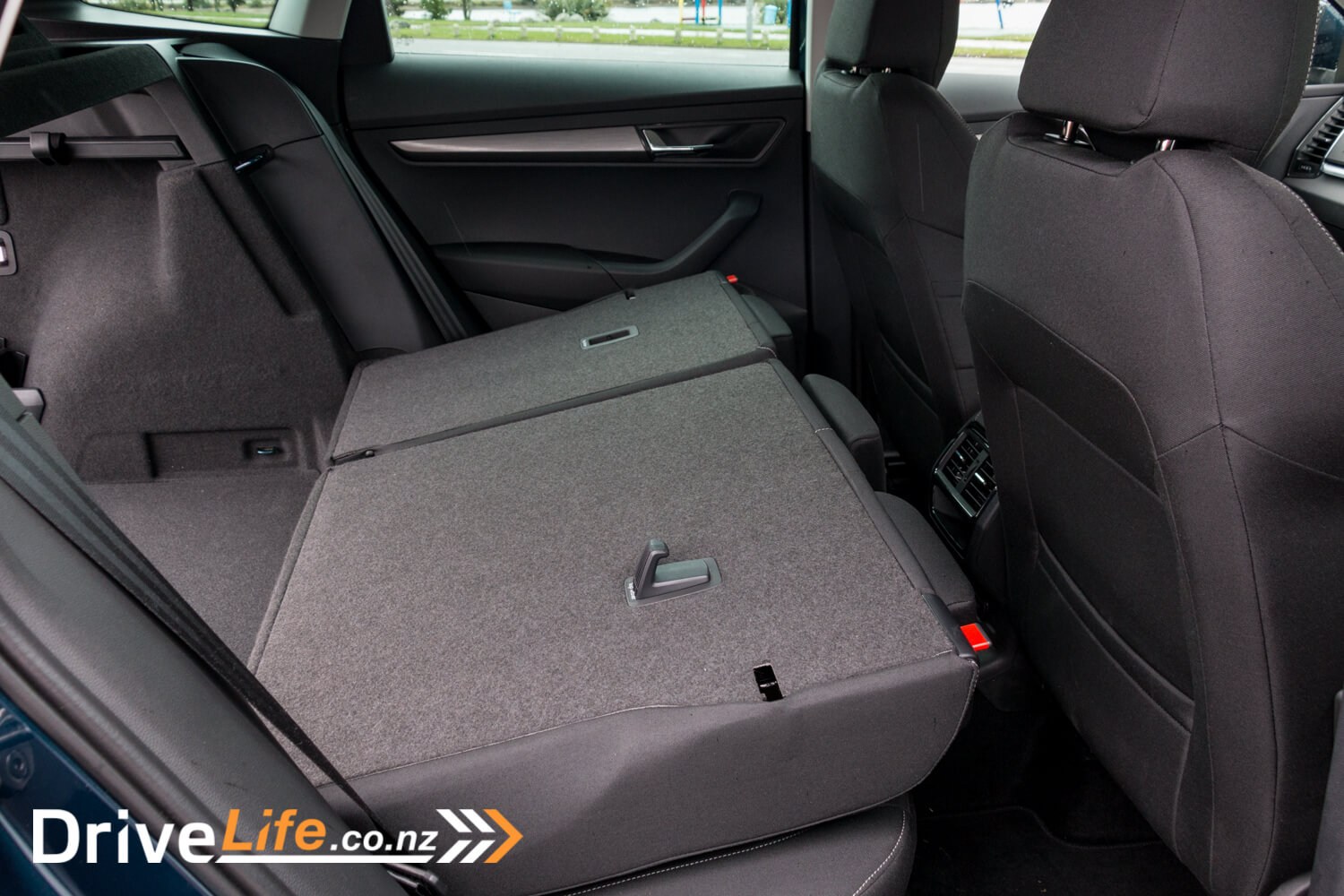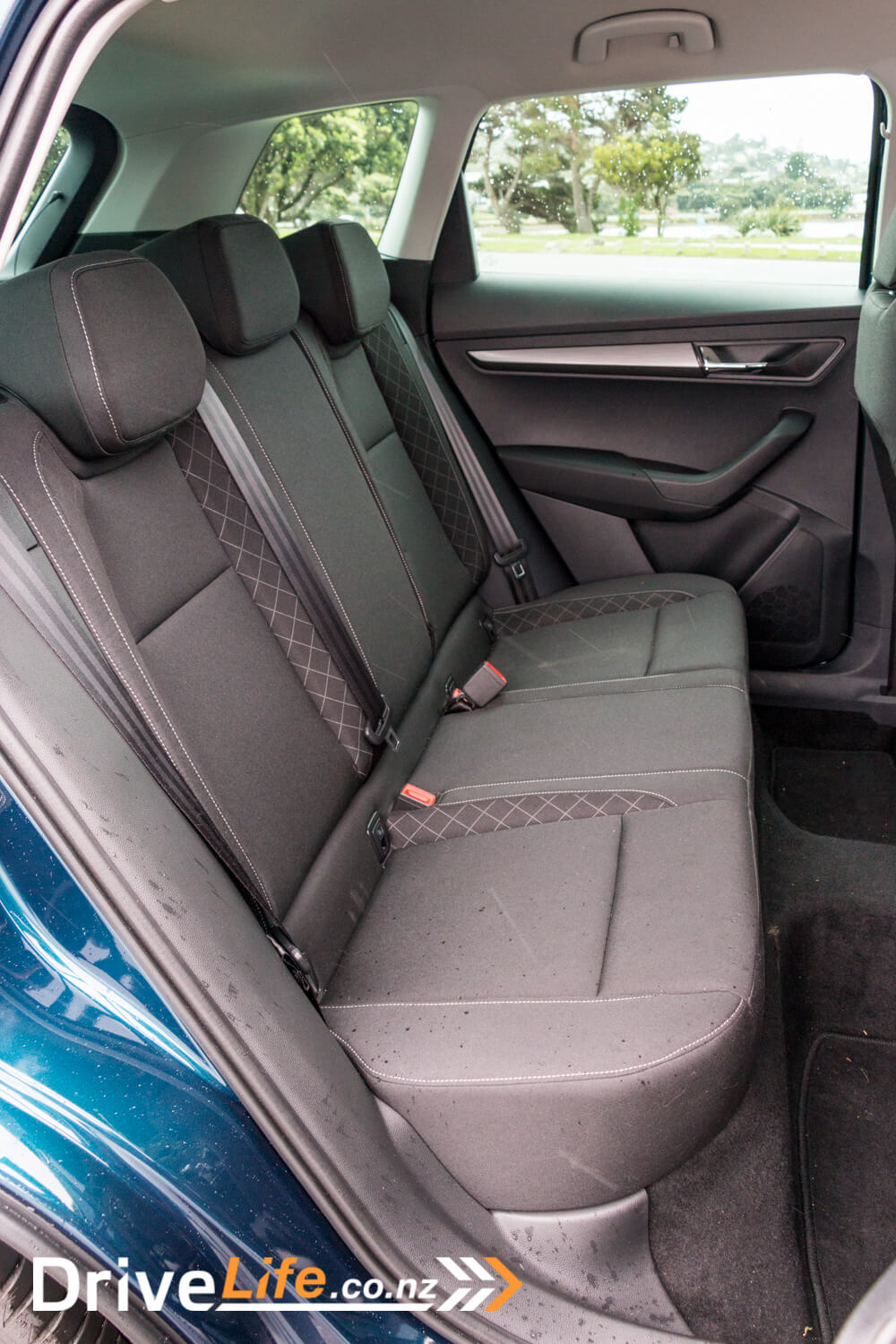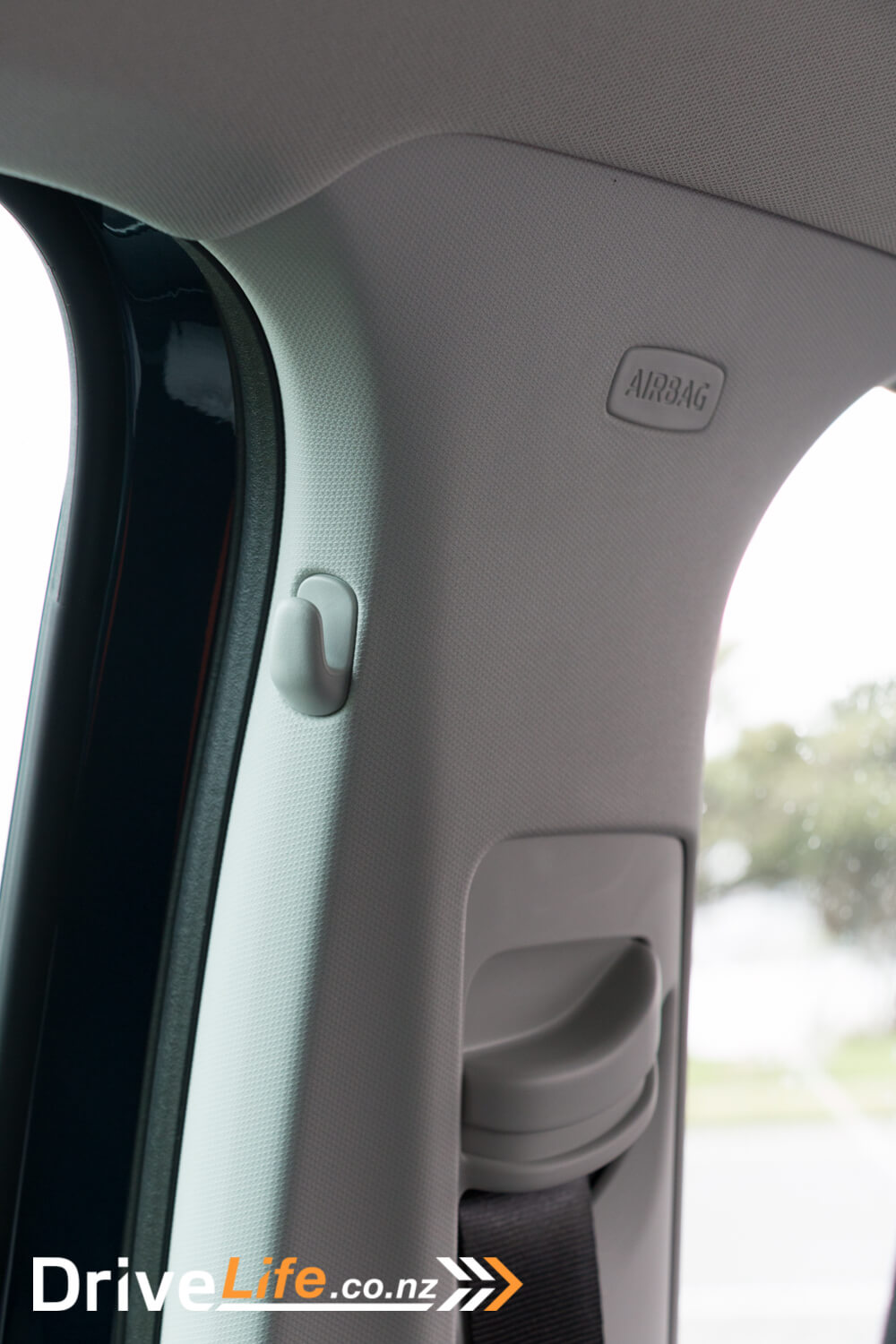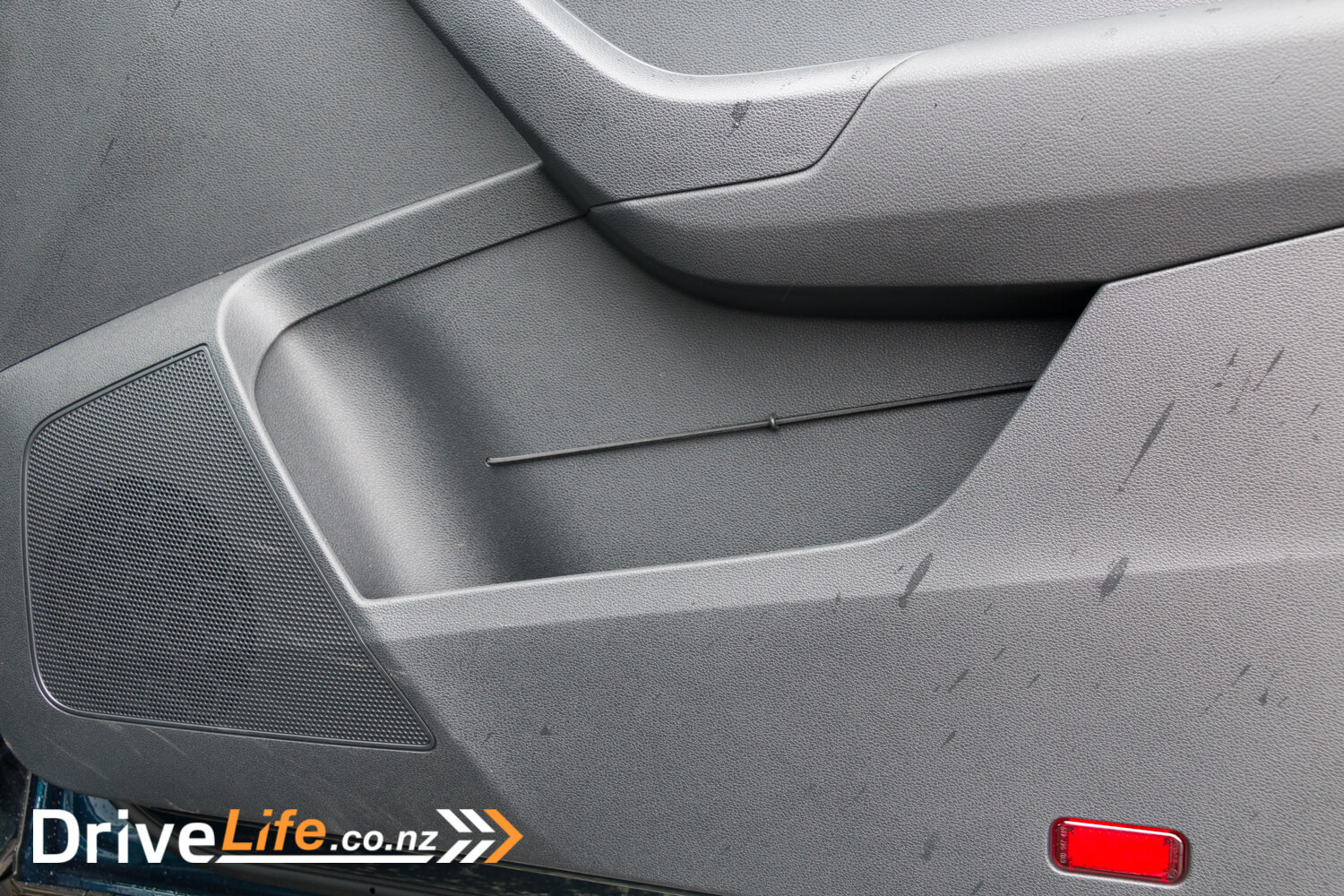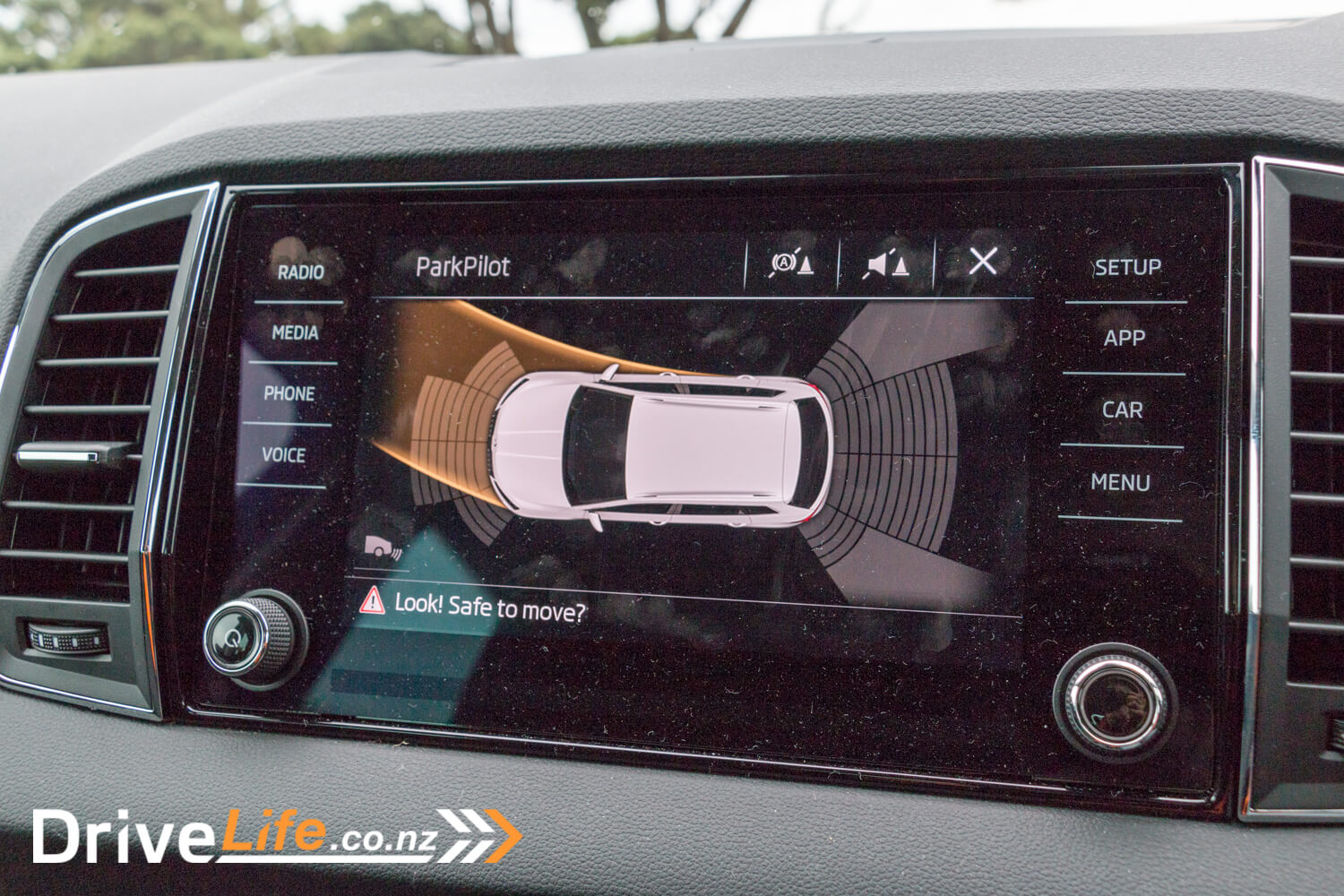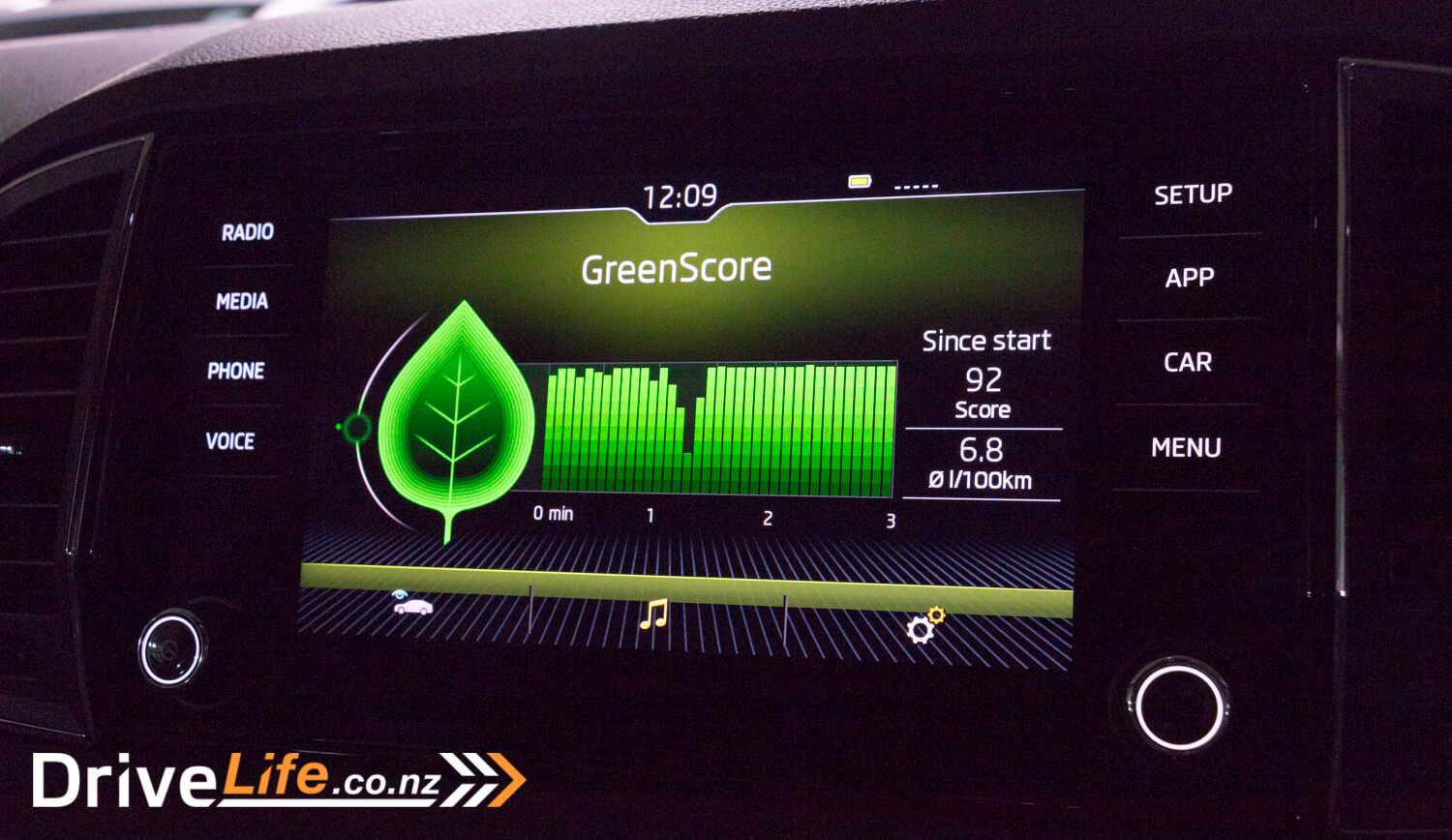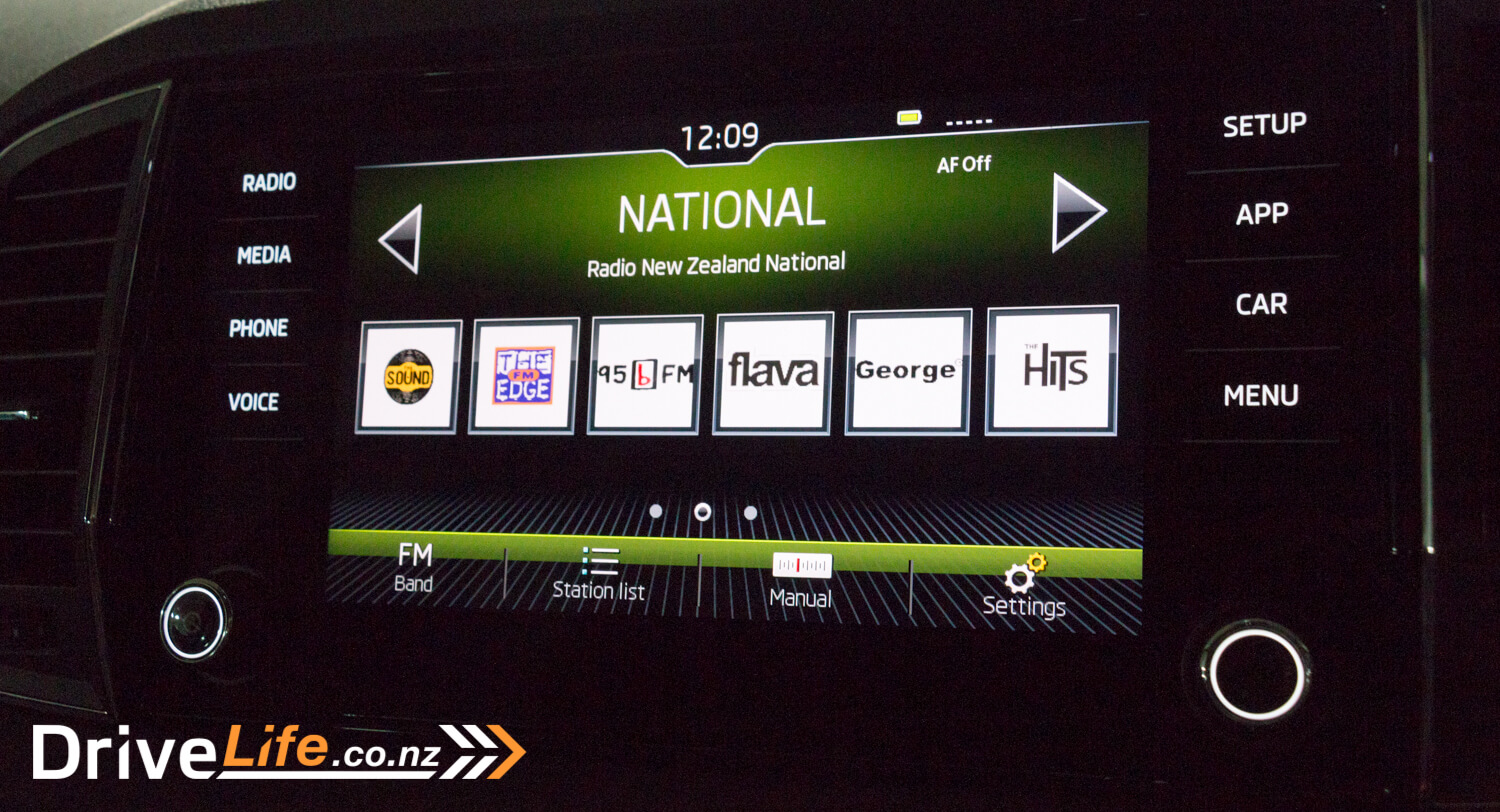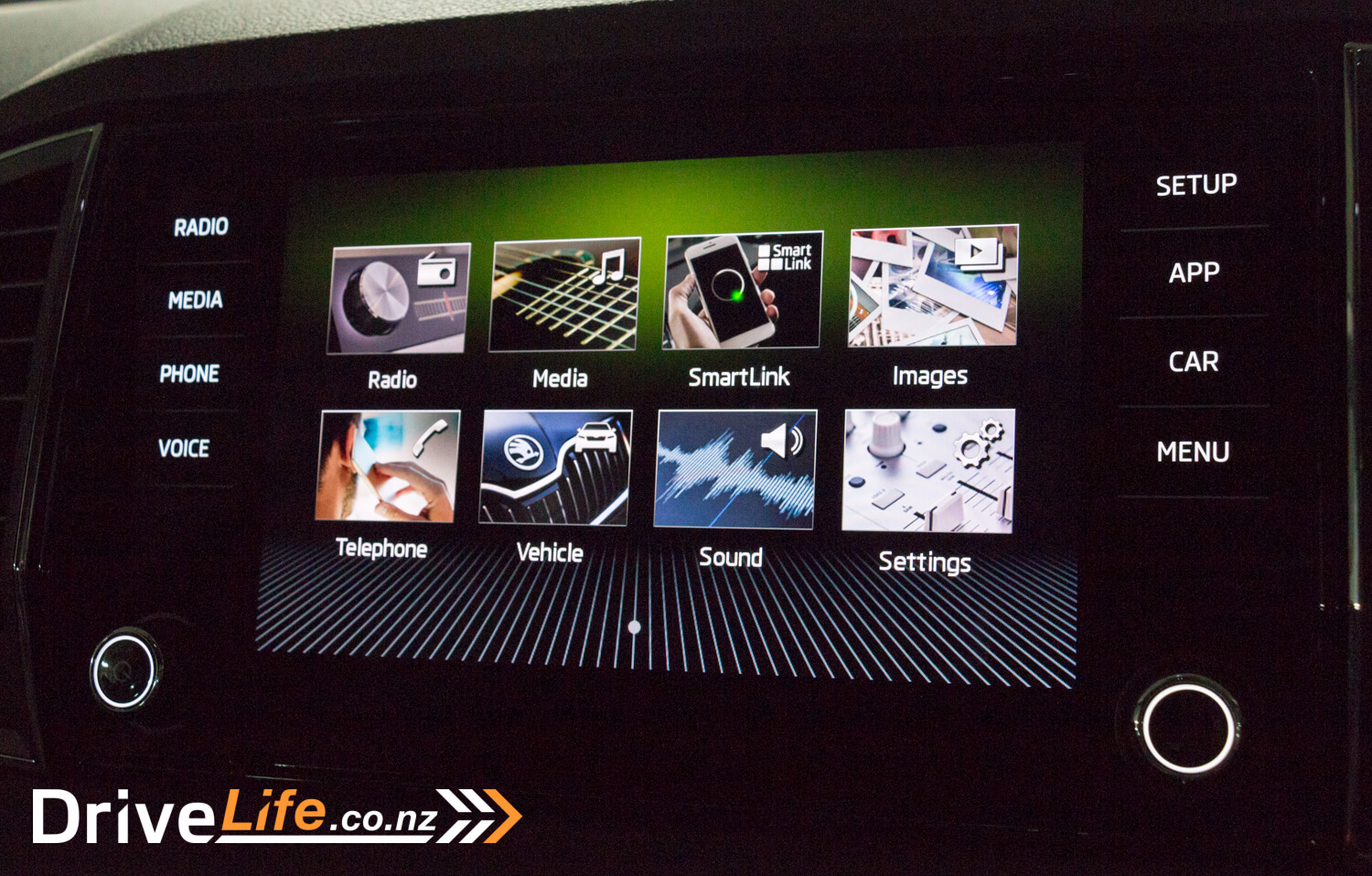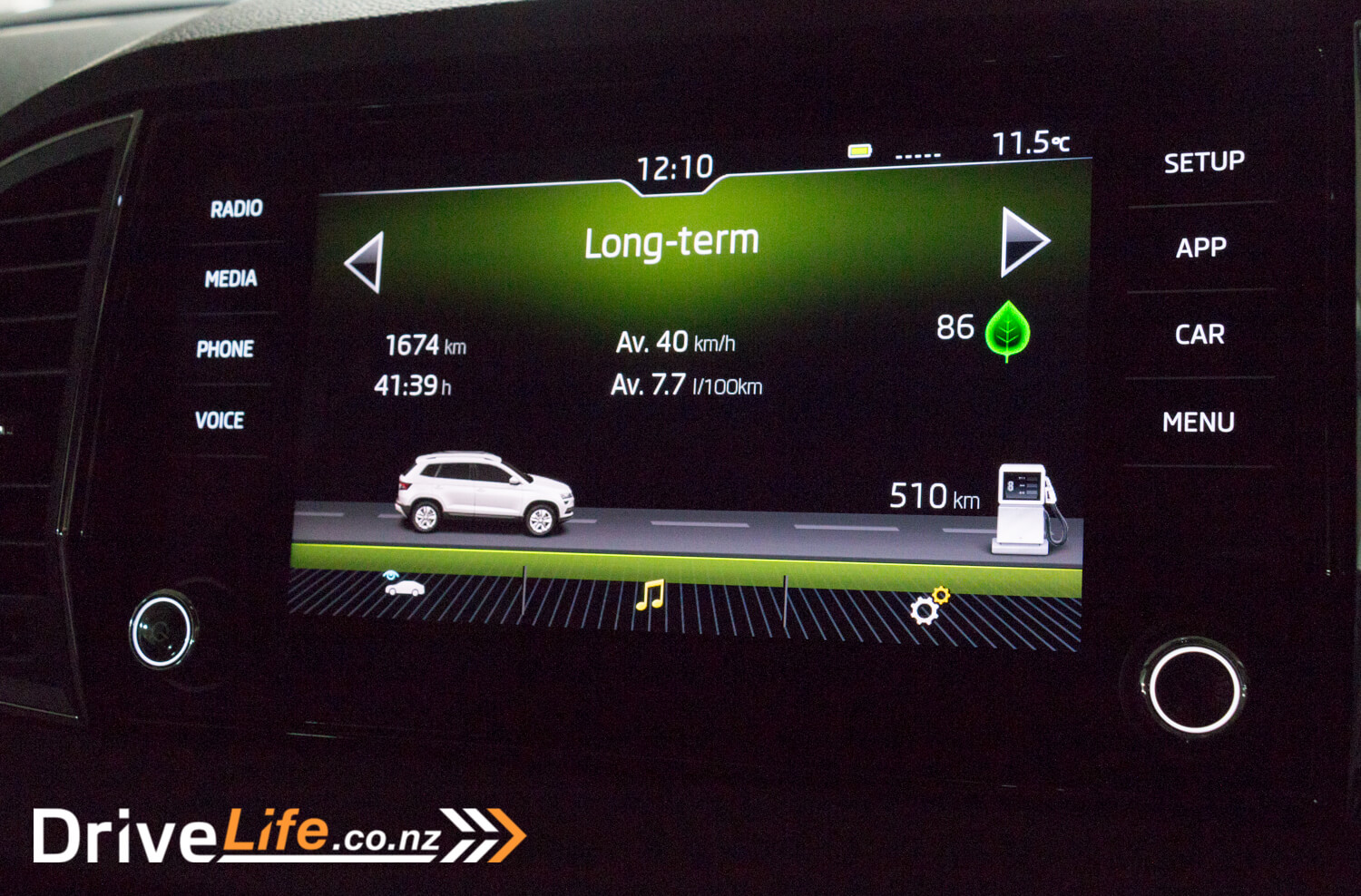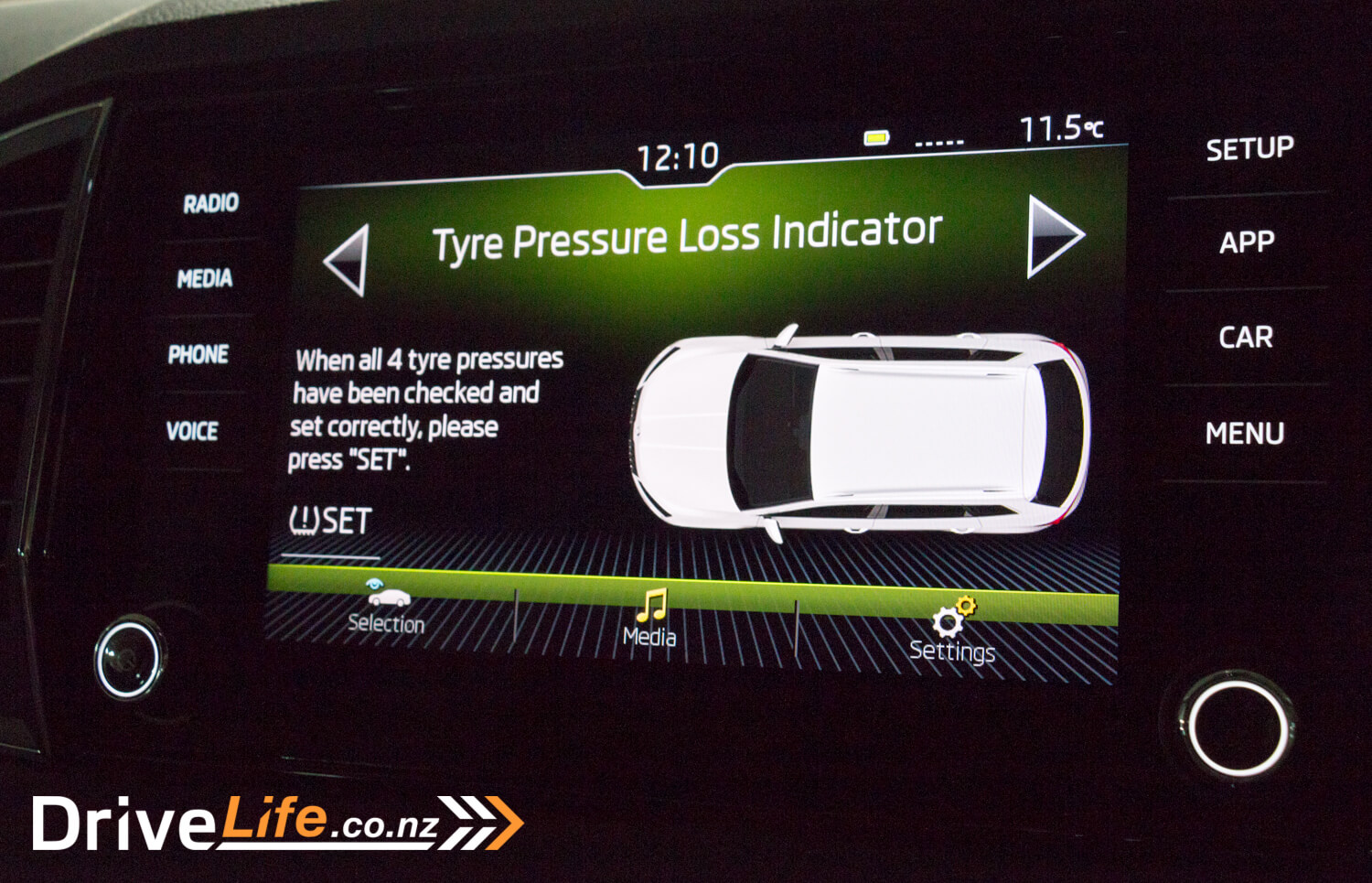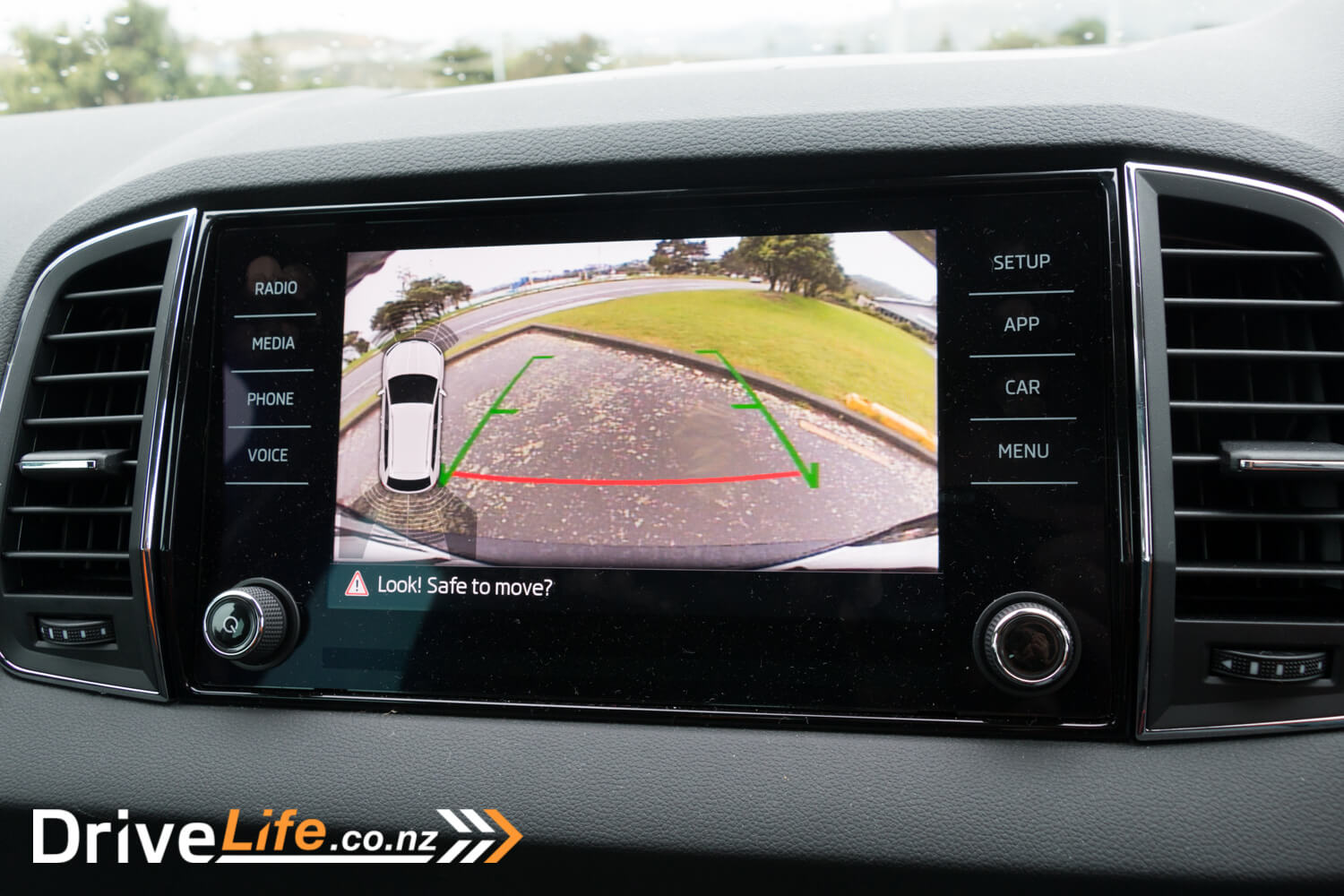Skoda’s first small SUV, the Yeti, was around for eight years, starting with a rather quirky look, with its circular front fog lights, then being facelifted to a more sensible Skoda corporate face. The Yeti name has now been dropped for its replacement in favour of Karoq – derived from native American words to match its bigger sister, the Kodiaq.
We liked the Kodiaq so much that we gave it two car of the year awards. How would the smaller SUV compare?
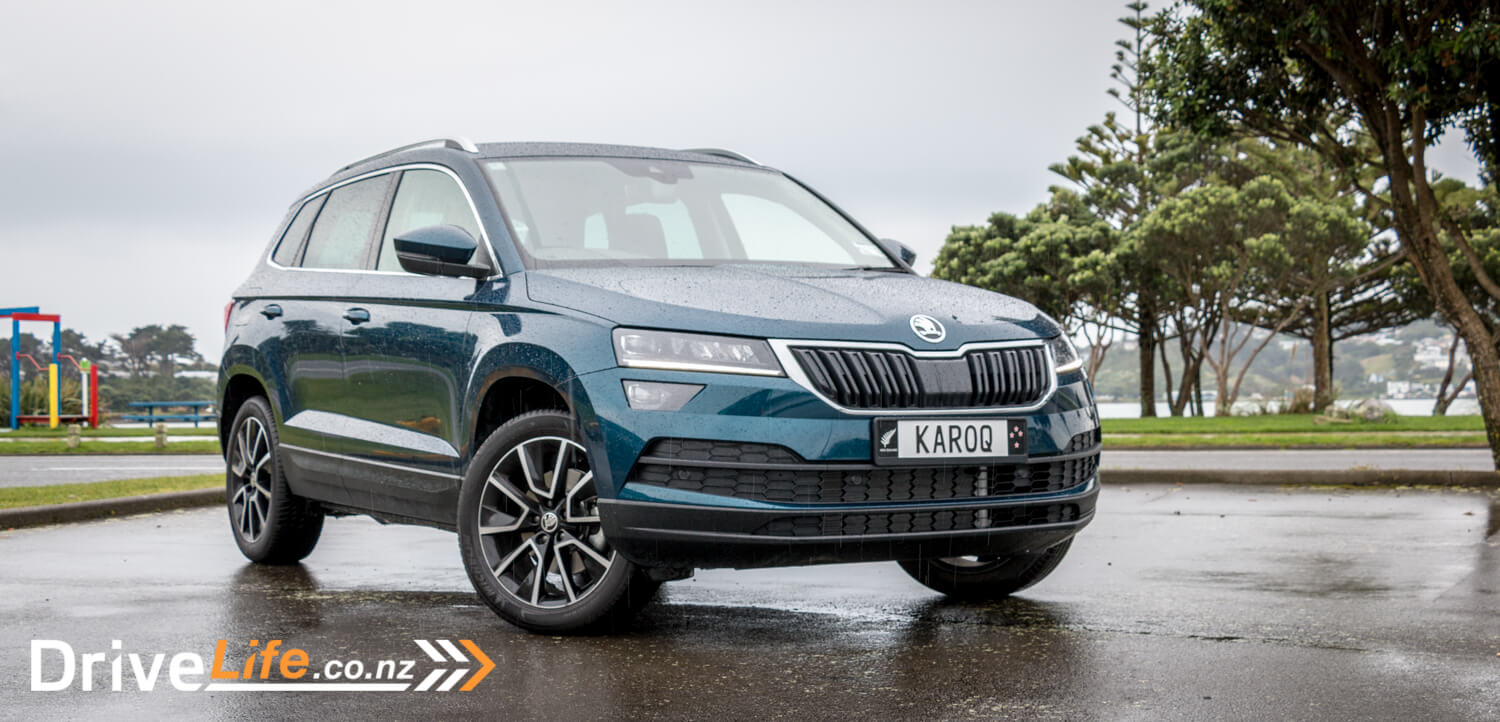
The Range
Our review car was the entry-level model TSI Ambition +, priced at $38,990. It comes with a 110kW/250Nm 1.5-litre turbo-petrol engine which drives the front wheels via a 7-speed DSG dual-clutch transmission. Standard spec includes 7 airbags, brake assist, cruise control, lane keep assist, blind spot detect, rear traffic alert, parking sensors all-round with reversing camera, keyless entry and start, LED headlights, auto lights and wipers, rear privacy glass, electric folding heated mirrors, and 18” alloys.
Step up to the Style spec at $42,990 and you also get adaptive cruise, drive mode select, electric tailgate with kick-to-open function, dual-zone climate, sunglasses holder, electric memory front seats, and satnav. If you were to option a base spec with all this it would add around $7500, so an extra $4k is a great deal.
Finally there’s the 4×4 turbo diesel in Style spec at $48,490. This has a 2.0-litre 110kW/340Nm engine. The diesel gets to 100kph 0.7 seconds slower, but has a combined fuel economy of 5.2l/100km compared to 5.6 for the petrol.
Skoda’s configurator lists 14 colours available including the rather fetching Lava Blue Metallic you see on our review car.
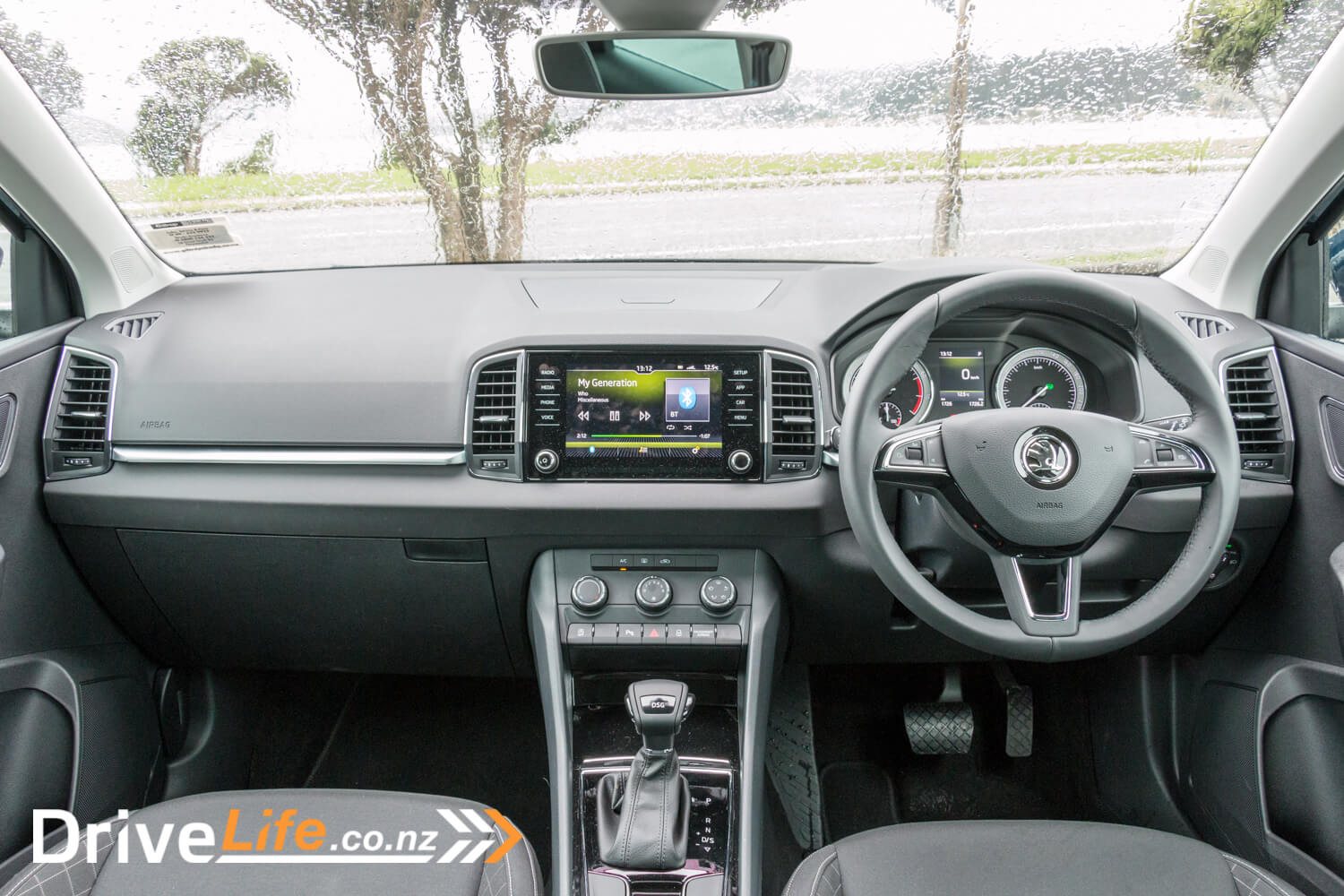
First Impressions
The Karoq is a good-looking car, well-proportioned, and wears the Lava Blue well. It has a decent chunky look to it without going too overboard. Use of chrome is pretty minimal, with just the grille and window outline done in the shiny stuff. I like that: it adds a bit of class without going too far. Similarly with the grey plastic around the bottom – it’s not over-done like on some cars.
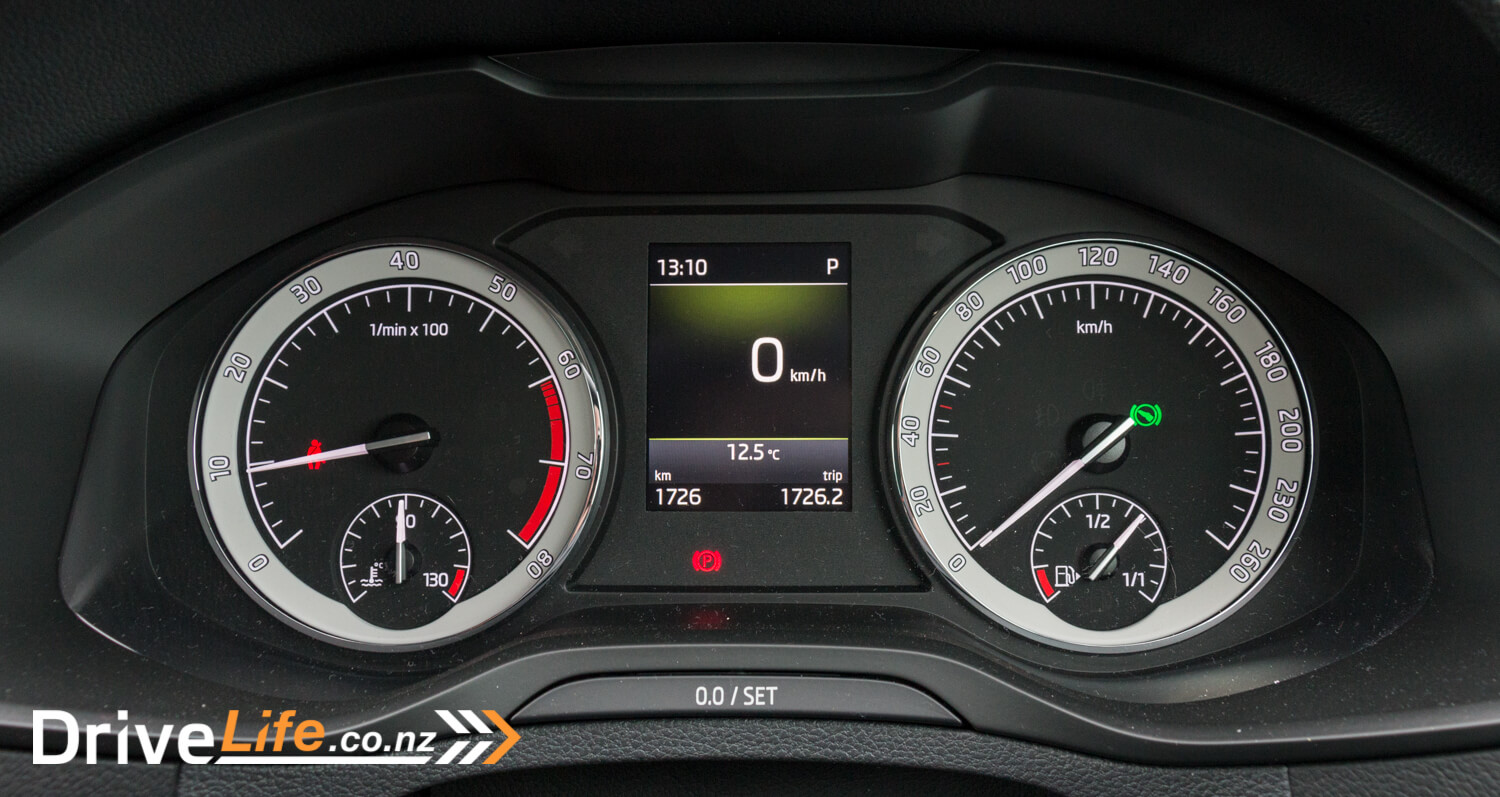
The Inside
The inside of the Karoq will feel familiar to anyone who has been in a recent VW or Skoda. It has the family look and feel, but Skoda have added a few of their trademark “simply clever” features. For example there are hooks in places you wouldn’t normally find them (like on the B pillars) , and there’s a little clip at the side of the windscreen to clip parking tickets in place.
The dash is a pretty simple layout with a large central media screen and a few buttons below for the various functions. This is the base spec, so instead of climate control you get three knobs for hot/cold, fan speed and air direction, you know like cars used to have? The system works well, but I’m surprised Skoda didn’t just go for climate control across the range.
The stereo is very good, surprisingly so on an entry-level car, it’s clear, with good bass and no distortion even if you crank it up. Bluetooth operation was flawless and it doesn’t revert back to radio like a lot of cars. You can also search by artist or track via the main screen when using Bluetooth, which is a feature most cars don’t provide
The instrument cluster is the familiar two-dial analogue layout, with a colour screen in the centre. They’ve kept it simple, so the dials are nice and clear and easy to read. The info screen in the centre is used for trip computer and various functions, including a digital speedo, which I like to have.
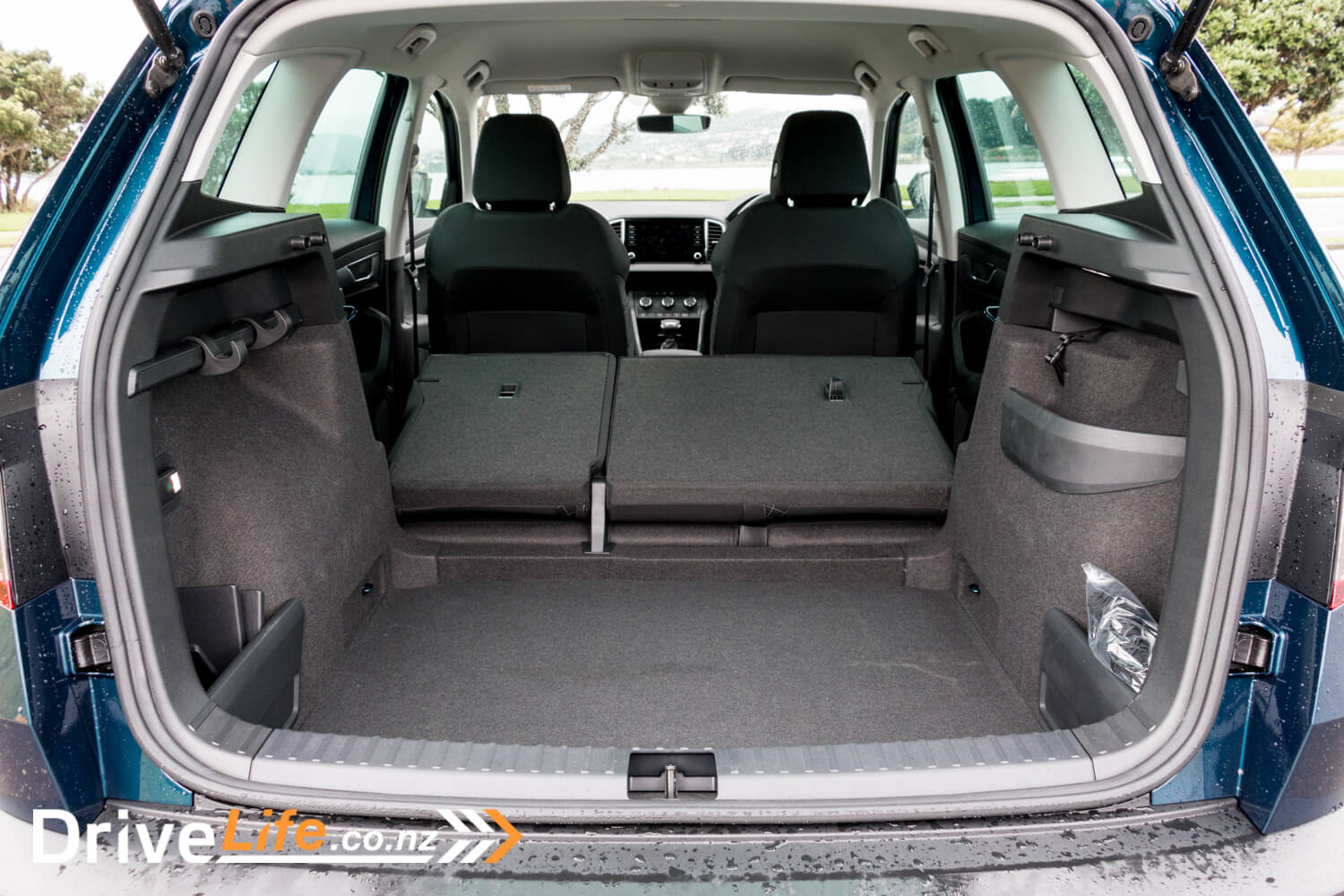
There’s a storage bin in the top centre of the dash with a pop-up lid, as well as a coverable storage cubby for a phone at the bottom, with USB and a power socket inside.
The seats look great with their cross-hatched stitching, and are very comfortable, with some side support. Seats in base model cars can be a bit, well, basic, but these are really good. There’s even lumbar support adjustment on both sides – normally the passenger loses out.
The rears are also comfortable, with good leg room for a car this size, and they even get an aircon vent of their own. This is becoming more common but a lot of cars still don’t have it. The rear seats are 60/40 split-folding, but there’s no pull-down armrest (much to my daughter’s disappointment).
Boot space is a generous 521 litres, and expands to a huge 1630 litres with the seats folded down. In the boot you get a few more nice features included, like storage bins at the sides, a removable torch, power socket, clever velcro luggage holders, and the sturdiest bag hooks I’ve ever seen. There’s even an extra bag hook that clips onto the child seat tether bar.
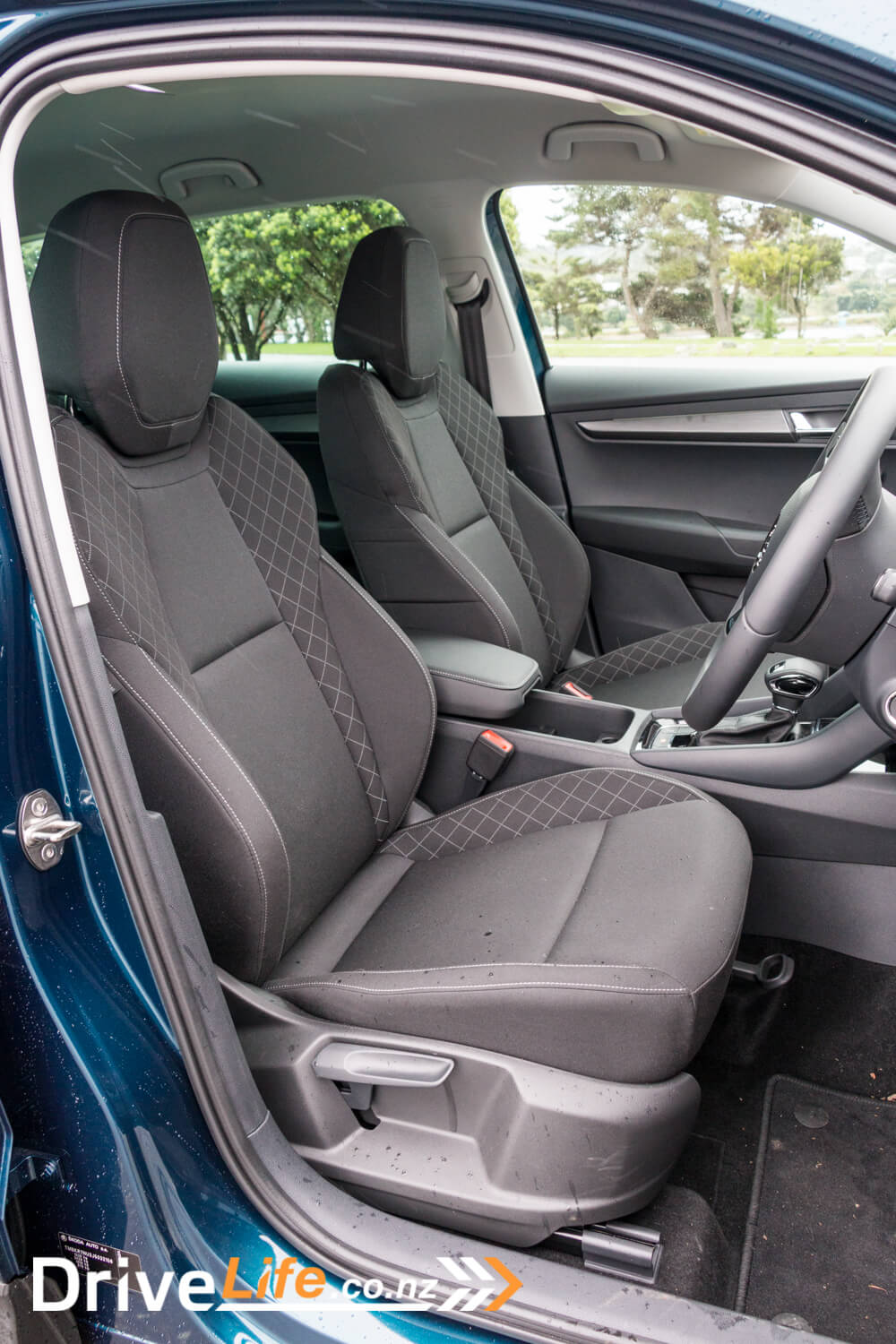
Talking of child seats, there’s ISOfix mounts in the rear seats, and also the front passenger seat, which I haven’t seen before. Other Skoda features include the ice scraper in the petrol cap, phone pockets on the front seats and elastic straps in the door pockets to stop things from rattling or falling out.
Under the boot floor you’ll find a can of tyre weld and an electric pump instead of a spare wheel.
With the higher spec Style model you get an electric tailgate, but Ambition buyers have to open and close it themselves, sorry! The pull handle is a really nice design though – made of rubber and it hangs down by about 10cm, making it easier to grab than handles on most SUVs.
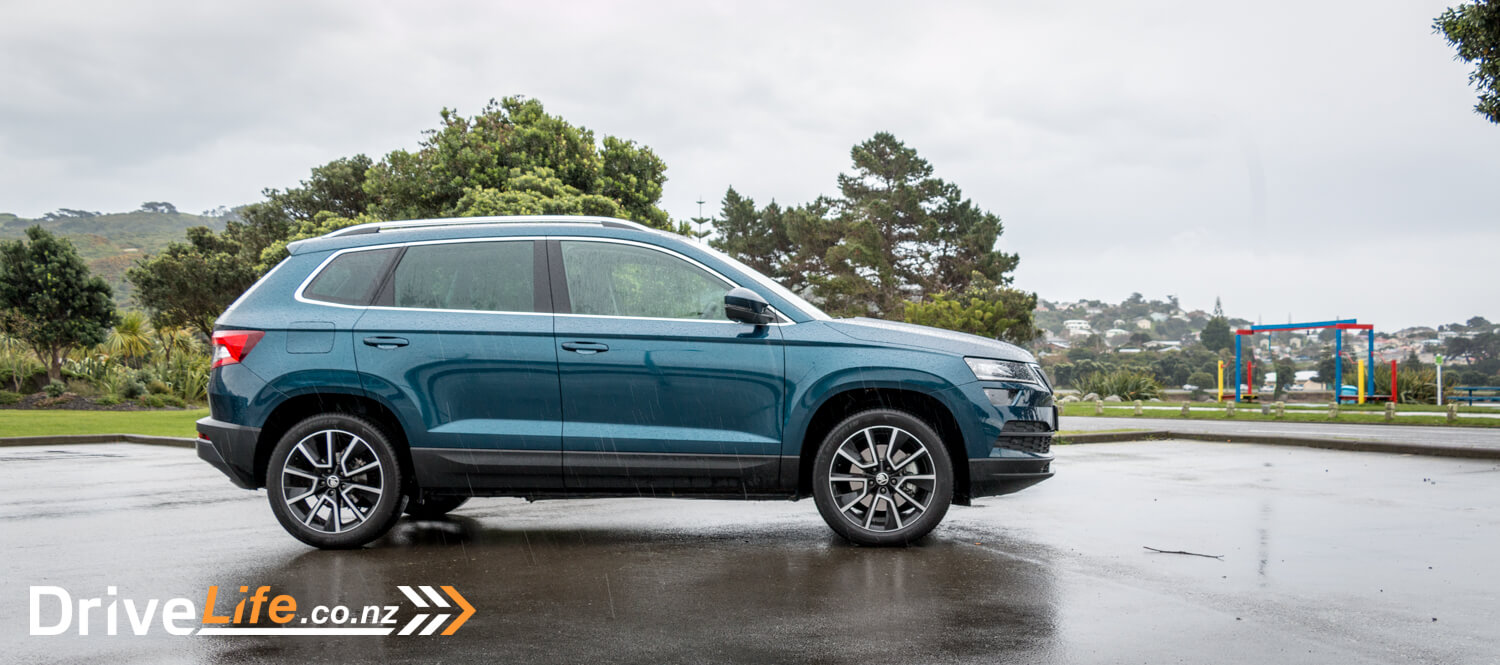
The Drive
As with most cars I review, my first experience of the Karoq was in traffic after collecting it. First impressions? Very quiet, good ride quality, and it felt bigger than I expected, roomy inside and high off the ground. Visibility all-round is good, and you get plenty of technological help too, with blind spot warning lights in the mirrors and rear cross-traffic alert when reversing. This is so useful when reversing out of my drive!
Parking is made easier by sensors front and rear linked to a top-down display on the centre screen showing where the obstacles are as well as having arcs to show where your wheels are pointing. It’s not a top-down camera view like some cars but it’s very useful, and there is a reversing camera, which is nice and clear.
Skoda have take done away with the VW/Audi/Toyota style third stalk for cruise control and integrated the functions into the indicator stalk. This sounds like it would be complicated but I think it’s a better way to do it. In my Audi I find myself indicating when what I want to do is change the cruise speed. It also reduces the number of thumb controls on the steering wheel, so you have stereo controls on the left, and phone and trip computer controls on the right. The cruise works well but is the older style, so not adaptive, and you have to keep an eye on it drifting over the set speed down hills.
There are two modes for the transmission – D and S. In Drive, the Karoq feels like it’s tuned for efficiency and has a bit of a squashy-throttle feel off the line. If you need to set off quickly you have to give it a bit of jandal, then it goes well. The 1.5-litre turbo engine makes 110kW, which is plenty to get to going in normal use. There’s an electronic parking brake, which can be set to engage automatically, and this works well with the engine stop/start function so you can take your foot off the brake and the engine won’t re-start until you touch the throttle. It can be a little jerky when starting the engine, disengaging the parking brake and setting off. The Karoq’s stop/start has the familiar VAG car habit of turning the engine off when you haven’t quite stopped, which can be a little disconcerting.
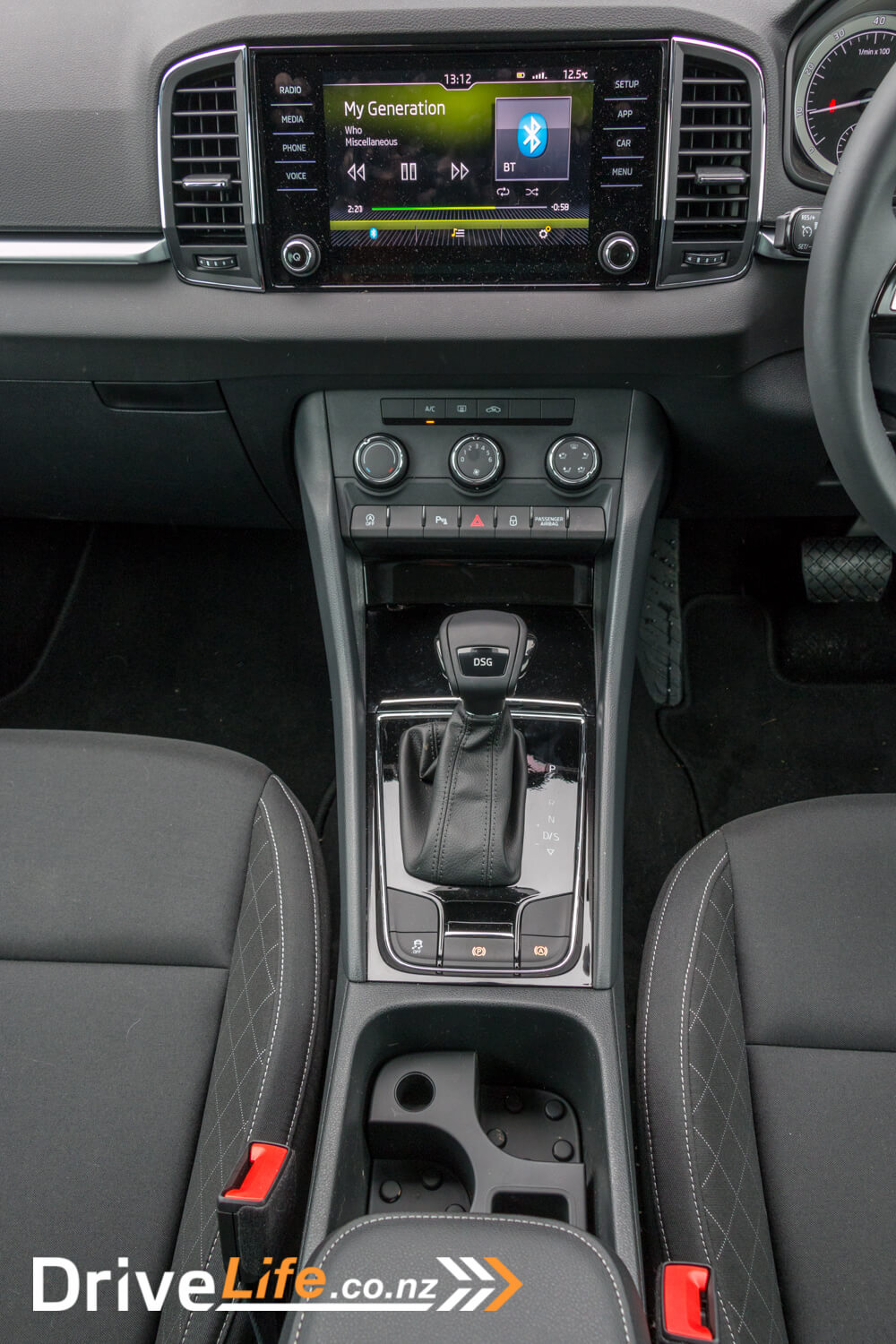
With the transmission in Sport mode, the Karoq feels more nippy and willing, but also holds onto the gears higher into the rev range, so it can feel like you’re over revving it. I left it in Drive for the majority of the time I had the car.
The shifter can be pushed to one side and used in manual mode, and I did try this a couple of times on back roads. The Karoq isn’t meant as a back-road driver’s car but it does pretty well, with less body roll than you might expect, and performance isn’t bad either.
But back to how this car is meant to be used. I drove the Karoq for a week, with a mix of town driving, commuting and a couple of longer trips. The ride is comfortable – firm but not too firm, handling and steering, all good. Not outstanding, but just really competent. Not once did it do anything that irritated me, and this is definitely a good thing! I didn’t manage to match Skoda’s quoted 5.6 litres per 100km, I averaged 7.1, but for a reasonably large SUV I think that’s pretty impressive.
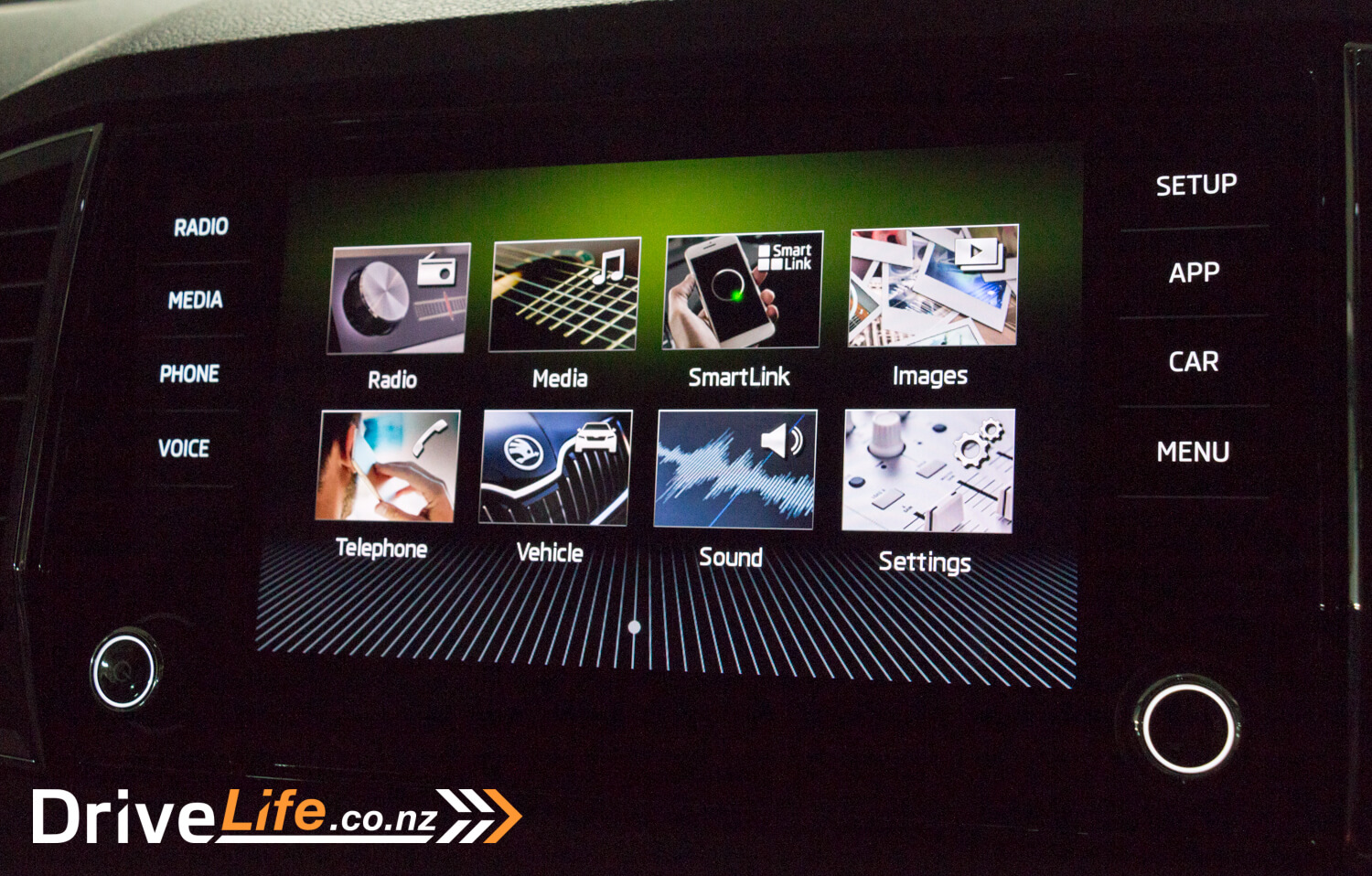
The Competition
| Brand/Model | Engine | Power/Torque | Fuel, L/100km | Seats | Boot Space, Litres | Towing Capacity, Kg | Price Highest to Lowest |
| Nissan X-Trail ST | 2.5 litre 4 cylinder | 126kW/226Nm | 8.1 | 5 | 565 | 1350 | $39,990 |
| Mazda CX-5 GLX | 2l 4 cy
linder |
115kW/200Nm | 6.9 | 5 | 455 | 1656 | $39,995 |
| Skoda Karoq TSI Ambitioin + | 1.5 litre petrol turbo | 110kW/250Nm | 5.6 | 5 | 521 | 1500 | $38,990 |
| Seat Ateca Style | 1.4 litre 4 cylinder turbo | 110kW/250Nm | 5.4 | 5 | 485 | 2000 | $38,900 |
| Kia Sportage LX Urban | 2.0 litre 4 cylinder | 114kW/192Nm | 7.9 | 5 | 466 | 1500 | $35,990 |
| Hyundai i30 | 1.6 litre 4 cylinder | 94kW/156Nm | 6.8 | 5 | 380 | 1200 | $35,990 |
| Honda HR-V S | 1.8 litre 4 cylinder | 105kW/110Nm | 6.6 | 5 | 431 | 1999 | $29,990 |
| Suzuki Vitara | 1.6 litre 4 cylinder | 86kW/156Nm | 6 | 5 | 352 | 1200 | $29,990 |
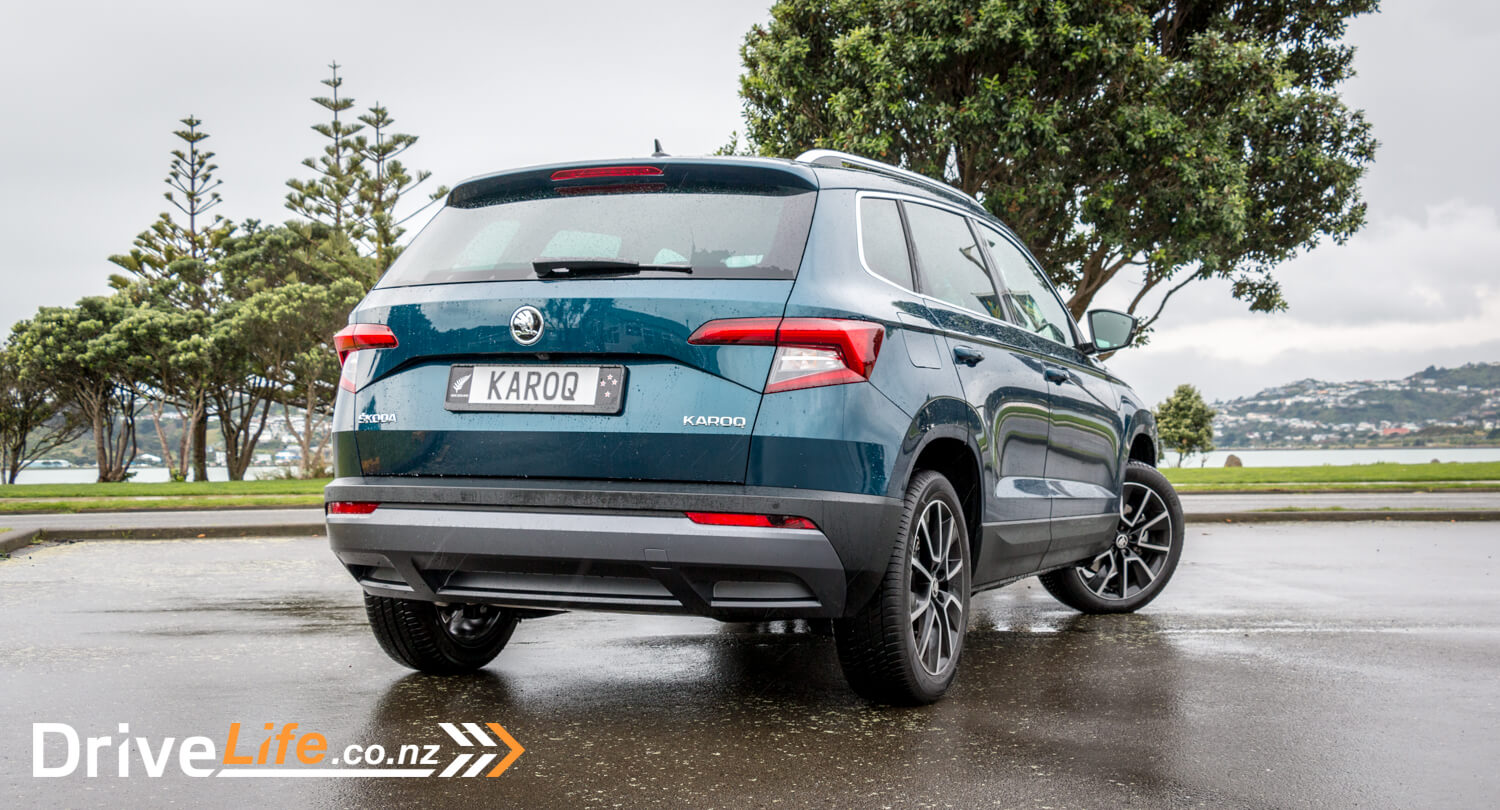
The pros and cons
| Pros | Cons |
|
|
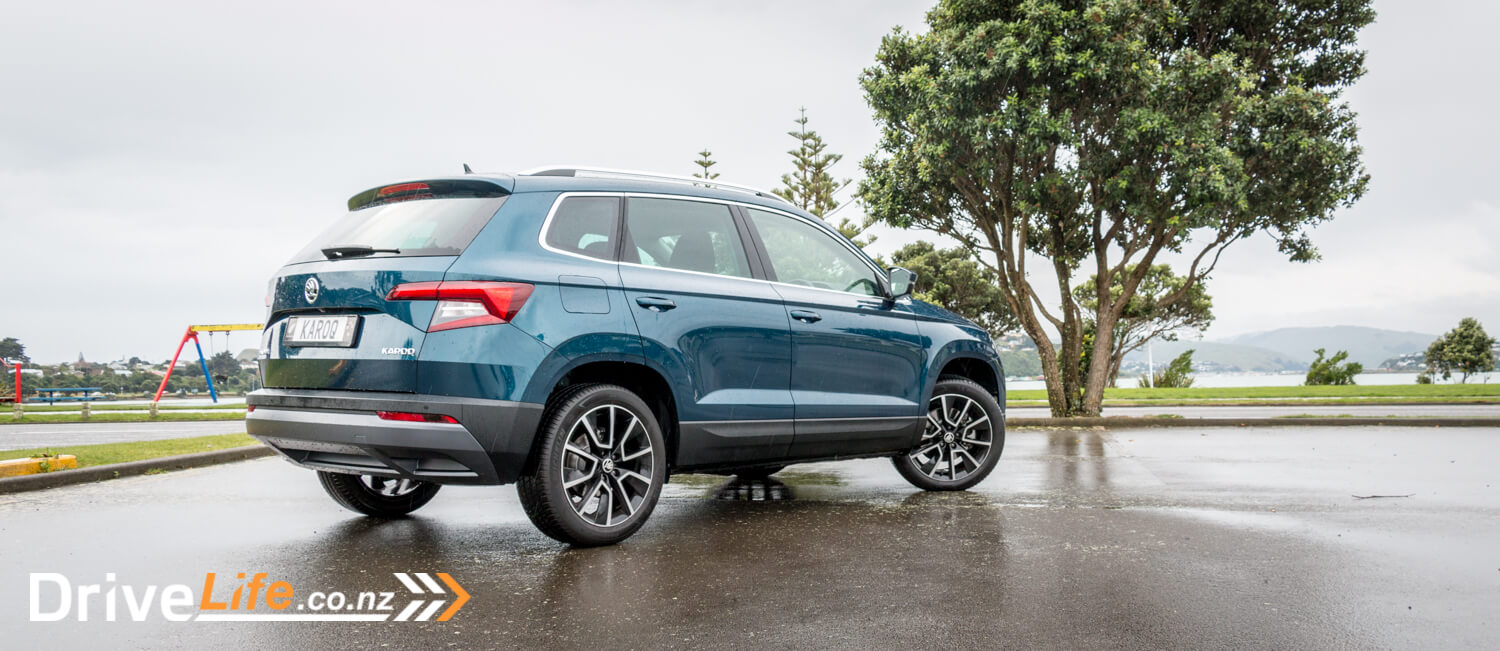
What we think
I’m really not an SUV person, but I liked this car. In fact I liked it more than some cars that cost twice as much. It’s quiet and comfortable and has plenty of space for your family and their stuff. And those clever little Skoda touches really endear you to the car and make it more special.
The 1.5-litre turbo engine is a good little unit, efficient but with enough power when needed, and the Karoq drives and handles well.
I think if you can stretch to it, the Style would be a better buy to get radar cruise, climate control, satnav and a power tailgate (amongst other things), but the entry level Ambition+ has a good spec and a lot of features that more expensive cars don’t always have.

Rating – Chevron rating (4.5 out of 5)
Skoda Karoq TSI Ambition +
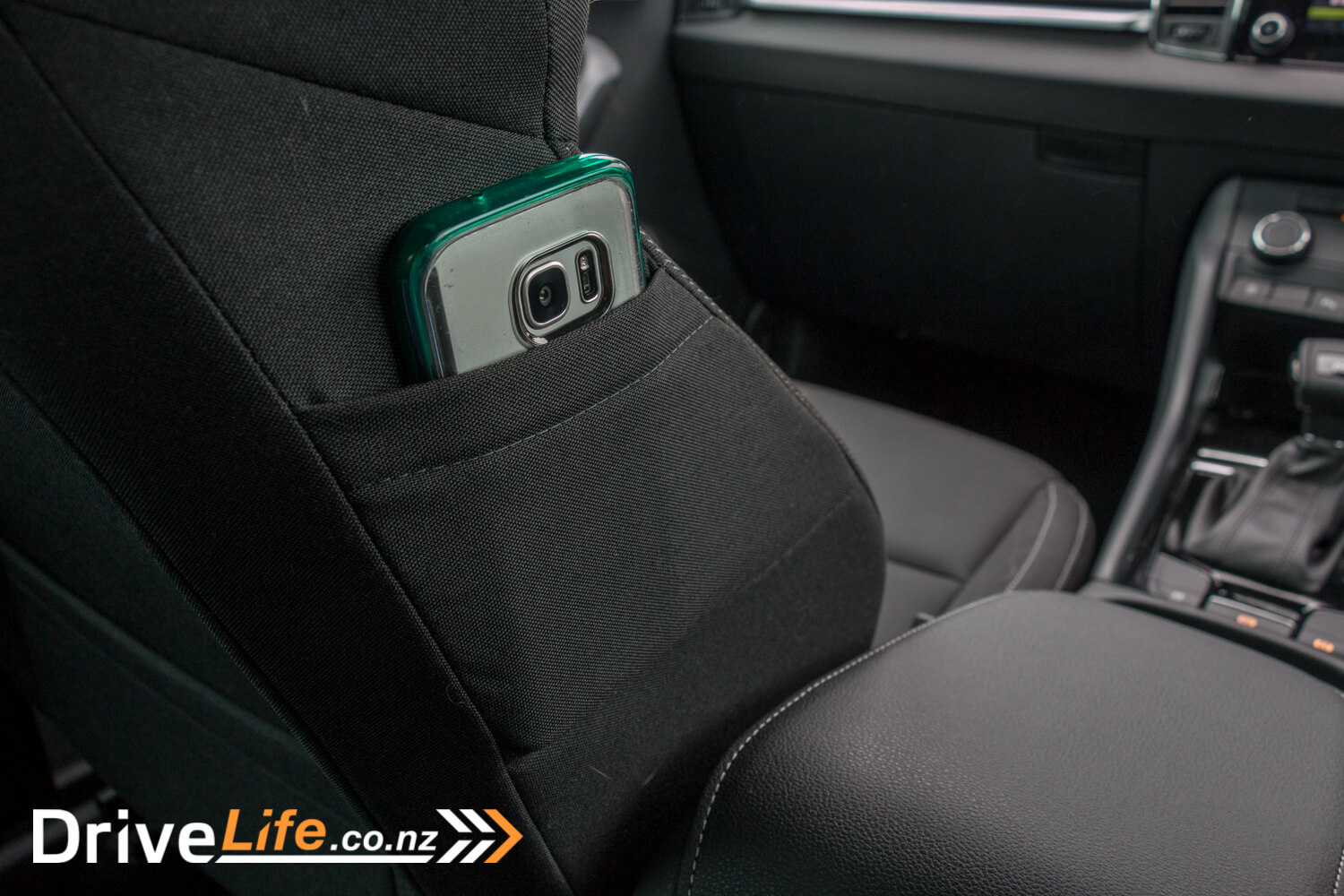
| Vehicle Type | Small SUV |
| Starting Price | $38,990 plus on-road costs |
| Tested Price | $38,990 plus on-road costs |
| Engine | 1.5-litre turbo petrol |
| Power Kw / Torque Nm | 110kW/250Nm |
| Transmission | 7-speed DSG |
| 0 – 100 kph, seconds | 8.6 |
| Spare Wheel | No – electric pump and tyre repair can provided |
| Kerb Weight, Kg | 1,318-1,399 |
| Length x Width x Height, mm | 4382 x 2025 x 1603 |
| Cargo Capacity, litres | 521 seats up
1630 seats folded |
| Fuel Tank, litres | 50 |
| Fuel Efficiency | Advertised Spec – Combined – 5.6 L / 100km
Real World Test – Combined – 7.1 L / 100km Low Usage: 0-6 / Medium Usage 6-12 / High Usage 12+ |
| Towing | 1500kg braked |
| Turning circle | 10.2
Small: 6-10m / Medium 10-12m / Large 12m+ |
| Warranty | 3 years warranty or 100,000km long life servicing up to 2 years or 50,000km
Extendable to 5 years for $1700. |
| ANCAP Rating | 5 stars |
